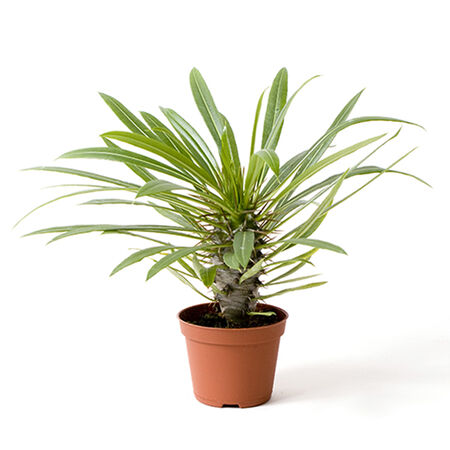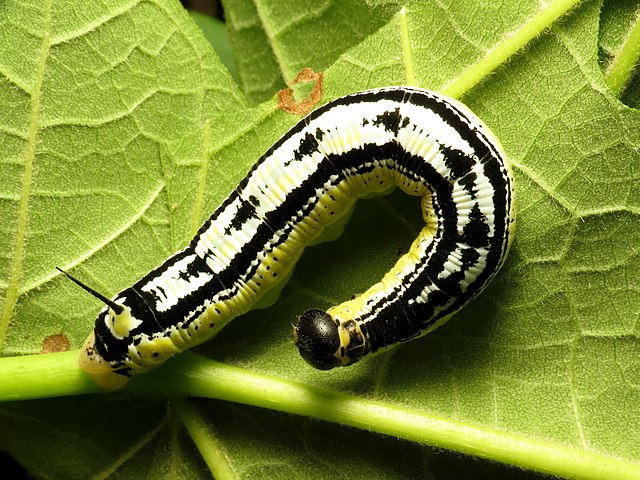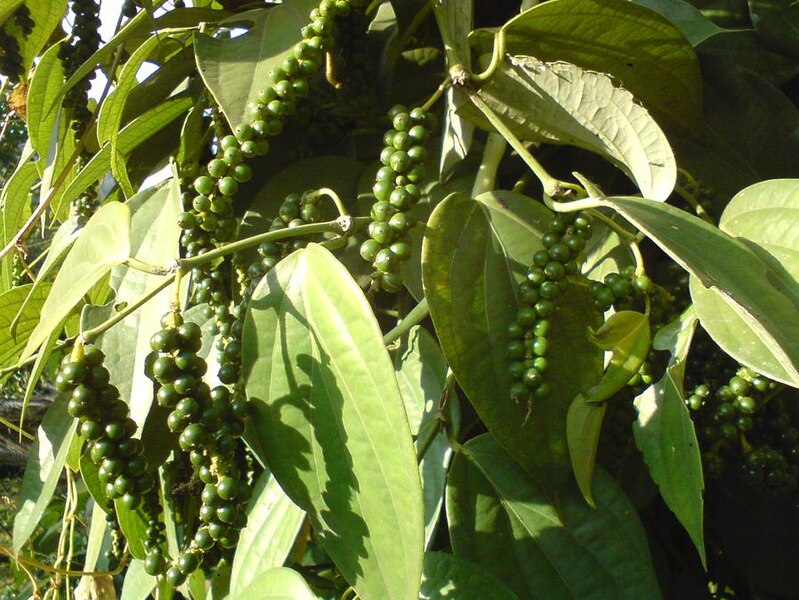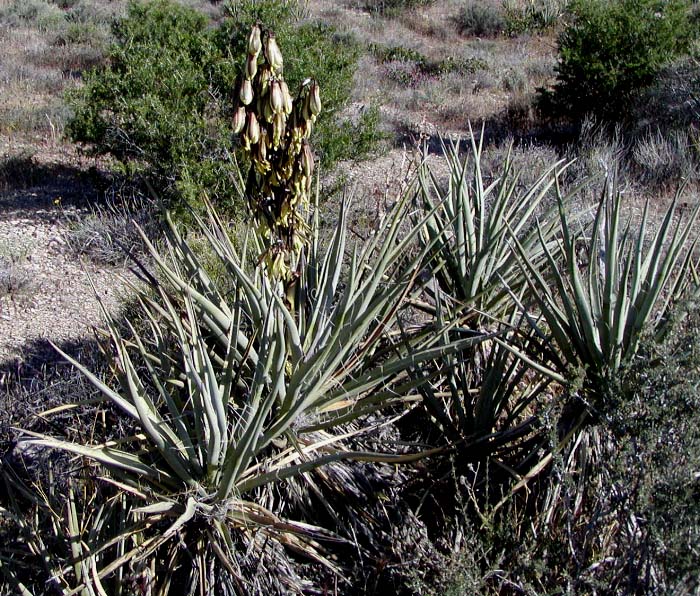New seed varieties just added or have just came back in stock!
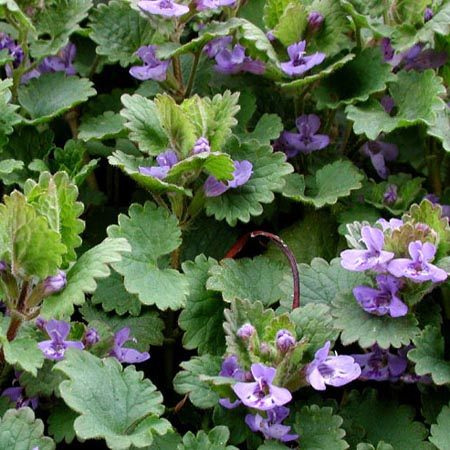
Deer eat both the green top and the radish itself. Daikon Radish is also used in soil improvements as well as cover crop. Daikon Radish is very aggressive and will germinate and thrive in most soils types around the world. Great for no till food plots!
One of the biggest benefits behind Daikon Radish is its potential as a source of forage for both deer and cattle. Because the Daikon Radish is so hardy, it can thrive in almost climate and will continue to thrive even as Winter temperatures set in. This makes Daikon Radish a popular form of cattle forage during the Winter months as well. During the Summer, it's just as popular a source of forage because of its aggressive growing tendencies, and how quickly it sprouts new leaves after being consumed.
Daikon Radish have been a popular as a form of sustenance for residents of Southeast Asia for thousands of years. Thanks to its mild taste, it has found new audiences across the world in more recent years. Daikon Radishes can be stored for weeks, even without their leaves, if they are stored in a cool place. In Japanese cuisine, they are often pickled. Obviously the large root leaves behind a significant cavity in the soil, making it an optimal option for breaking up soil, including heavy clays, for those who wish to plant new crop options in years to come. Studies have shown that this taproot leaves more than 6 to 10 inches of effect on soil compaction. The word "Daikon" actually translates to "big root" in Japanese!
Cooking with Daikon Radish: Noodles: Try shredding daikon into "noodles" and adding to soups, stir-fries, or as the base for pasta sauce. Use a vegetable peeler to shave the long root into thin strips, then quickly cook into stir-fries, etc.
Salad: Peel, then grate, julienne, dice, or slice to add crunch to your favorite salad. Many like to sprinkle mine with Ume Plum Vinegar when using raw.
Stew: A somewhat traditional option, try adding big chunks of dakion radish to hearty stews. Try a Beef Stew with Red Wine & Herbs or Beet Bourguignon.
Roasted Like any root vegetable, daikon is great roasted. Use a basic recipe, then branch out to Miso Maple Roasted Vegetables.
Slow cooked baking pan or slow cooker with carrots, onions, garlic, low-sodium seasonings, low-sodium vegetable broth, lean meat. Turn on low and let the juices and flavors start mixing for an all-in-one meal.
Health benefits: Boosting digestive health. Assists in detoxification — As a diuretic, daikon may help stimulate urination. Weight management — Daikon is a low-calorie and low-cholesterol vegetable, yet still high in fiber
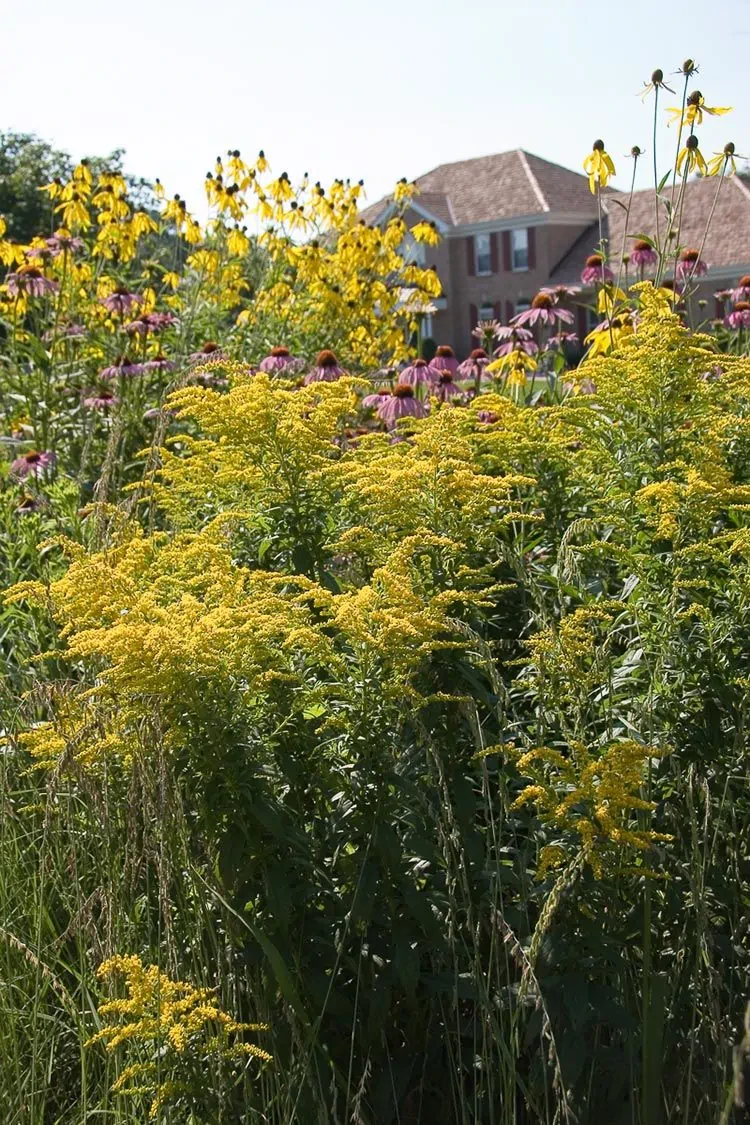
his species is primarily clump-forming and does not spread aggressively as do some of the other goldenrod species and hybrids.
Interesting goldenrod for native plant gardens. Also appropriate for borders, cottage gardens or butterfly gardens. May be grown in herb gardens. Grows 2-4 feet tall, hardy for zones 4-9.
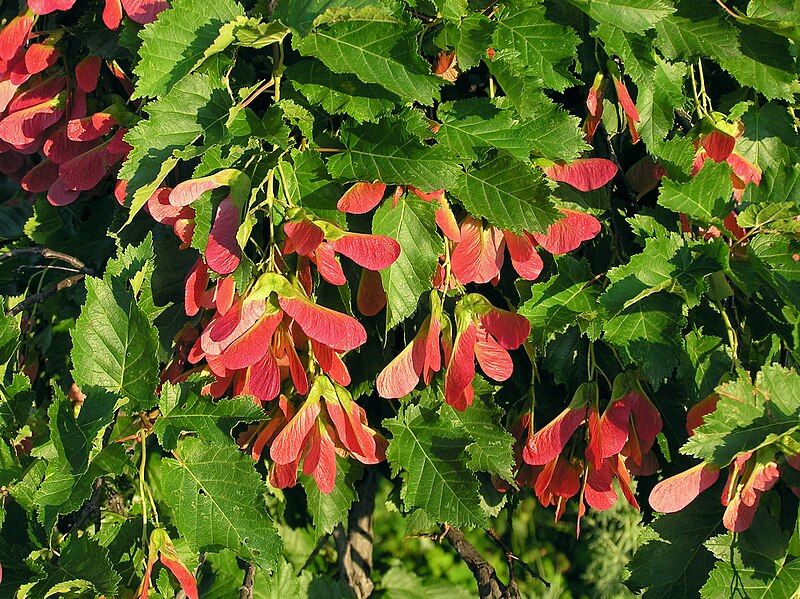
It blooms with whitish-green flowers from May till June and proudly bears pairs of red samaras that mature in the late summer through early autumn. Tatar maple grows up to a height of 15-40 ft and boasts of thin, pale brown bark which becomes charmingly fissured on mature plants. The leaves of this species are simple and broadly ovate, displaying an unmissable matte green hue that pairs wonderfully with the pink-tinged, slender leaf petioles. In autumn, it puts on an alluring display of red foliage, making it a fantastic addition to any garden.
Acer tataricum is well-adapted to different soil types- from sandy to loamy and heavy clay soils- and pH levels. It exhibits an extraordinary tolerance for climatic extremes, thereby able to withstand hot, cold, and dry weather conditions. Making it a favorite for adding visual appeal to backyards, parks, and shelterbelts. This heartily versatile maple, with its lush foliage and weather-resistant properties, the Acer tataricum is sure to make an enriching addition to any landscape. Zones 3-8.
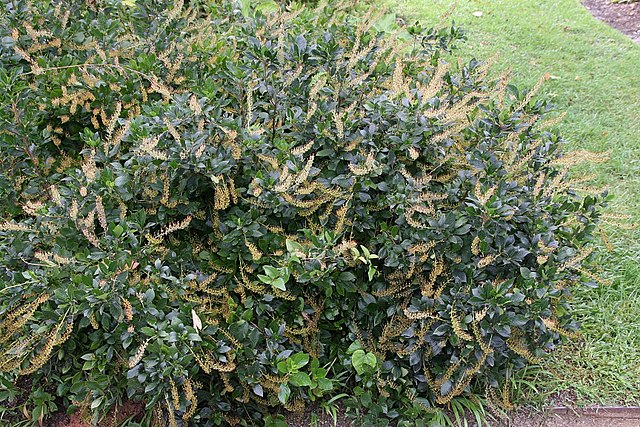
Not just aesthetically pleasing, these flowers open from bottom to top, attracting bees, butterflies, and other pollinators, offering them a striking choice of nectar during a season where choices are sparse. Following the blooming season, the plant generates eye-catching dark brown fruits which persist into winter, maintaining interest and adding to its charm. The lush and glossy dark green foliage morphs into a stunning golden-yellow in fall, further enhancing the plant's visual appeal.
The 'Hummingbird' is particularly renowned for its ability to produce exceptional flowers even in shady locations, making it a preferred Summersweet cultivar. It surpasses the species in its compactness and flower production capability. A reliable shrub originating from coastal Maine to north Florida and then west to the eastern edge of Texas, the 'Hummingbird' Summersweet adds beauty and fragrance to any landscape.
About 30% germination rate. Hardy for zones 4-9.
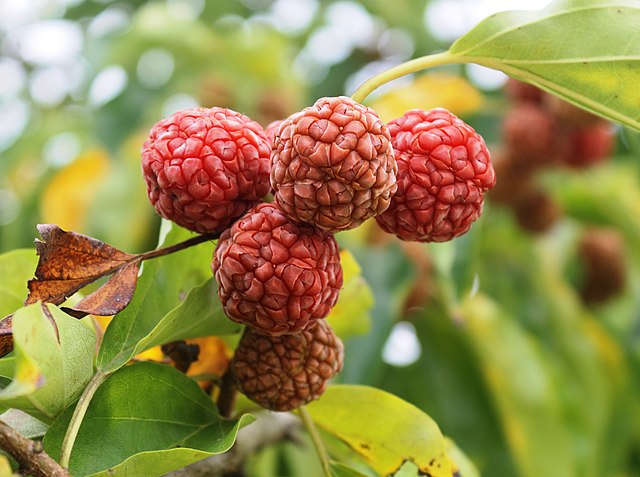
Beyond their delectable taste, the plant offers numerous health benefits. For instance, the wood is perfect for an infusion that treats sore or weak eyes. The inner bark and wood treat ailments like malaria, debility, and menorrhagia. The root stimulates milk production, treats amenorrhea, and exhibits galactagogue properties. Moreover, the plant is famous for its ability to combat blood stasis, increase blood circulation, and alleviate conditions like cancer, especially in the alimentary system, lungs, and blood.
Native to East Asia, it grows up to six meters in height and can be cultivated for fruit. Try the myriad benefits Maclura tricuspidata Che offers.
USDA zones 5-9.
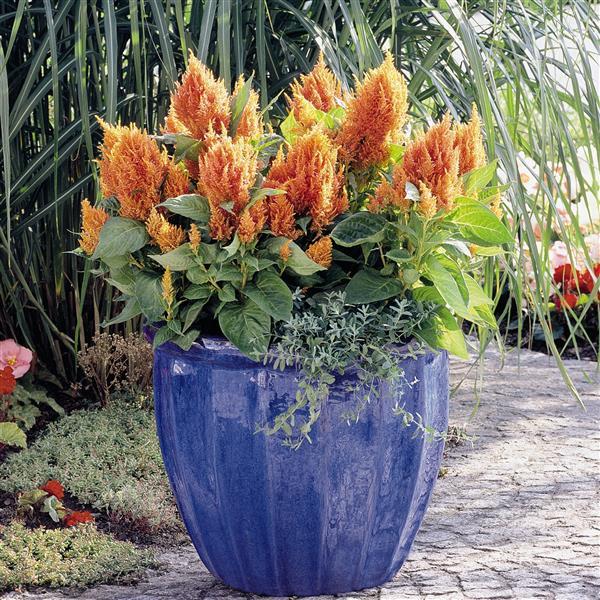
When grown in the full sun, Fresh Look Orange plants mature at 12 to 18 inches tall and spread 12 to 20 inches. The central plume can be 8 to 10 inches tall and 5 inches wide. Like all Celosia plumosa, the flowers can be cut and dried for everlasting homemade bouquets.
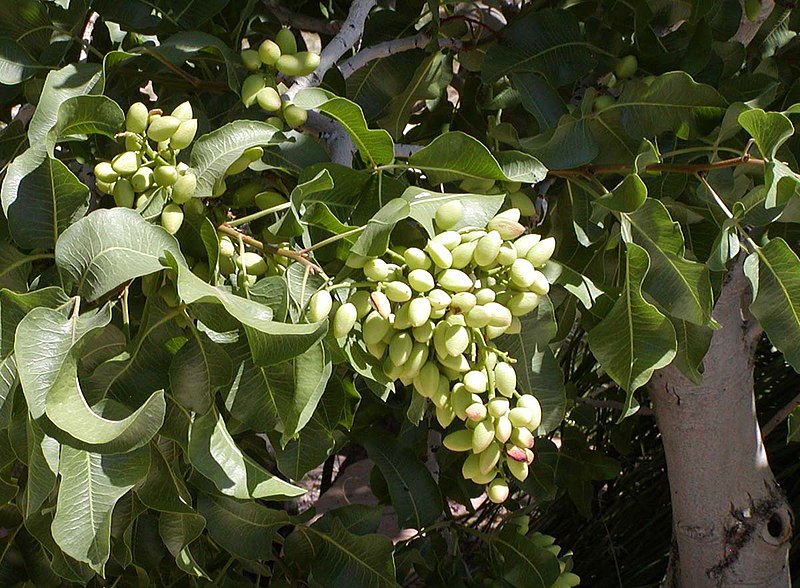
Their green kernels have a distinct and widely-appreciated flavor, making them a popular choice in ice cream, baked goods, salads, and as a snack or dessert nut. These trees are tolerant of saline soil, but require long, hot summers to properly ripen. Commercial production centers include Iran, Turkey, California, and Australia. Try these nutritious nuts today and experience their delicious taste and health benefits for yourself! Zones 8b-10.
Germination: Soak the seed in room temperature water for 24–48 hours. Then roll seed loosely in damp (not wet) burlap, cloth towels, or paper towels and place the towels in plastic bags. Keep refrigerated at 33–36 °F for 6 weeks. After 6 weeks, remove bags from refrigerator and place at room temperature, between 70–90 °F, check seeds for root growth at least every other day and remove seeds from towels as early as possible after observing root growth and plant in light soil media, potting soil, peat pots, or other standard soil mix.
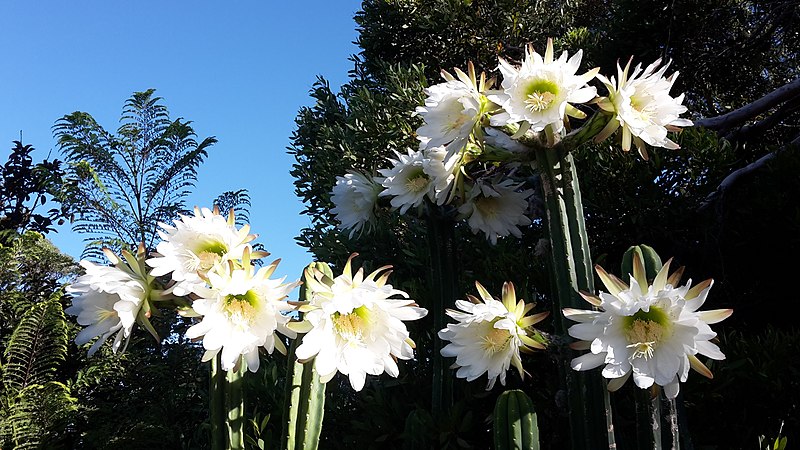
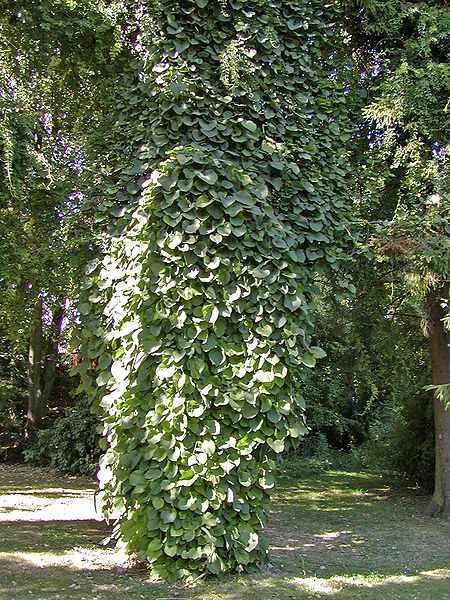
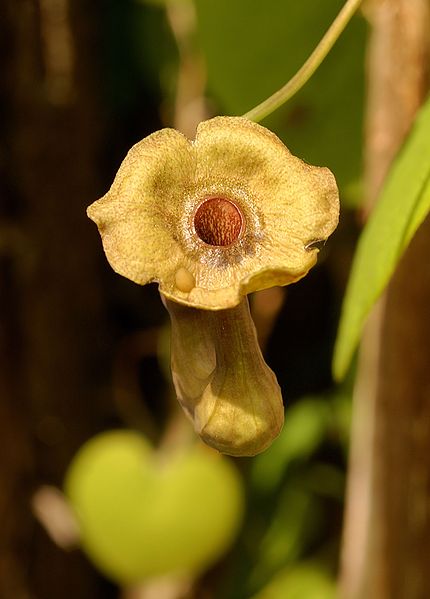
Dutchman's Pipe is a very vigorous native vine. It will create a thick green screen in a short period of time making it ideal for covering a fence, wall or strong trellis. It can grow to 30 feet tall in some cases.
It has large, dark green, heart-shaped leaves and very interesting flowers that are shaped like a small pipe. They are a few inches long and are a mahogony-cream color.
This vine plays an important role in the life of native Pipevine Swallowtail butterflies. The flowers provide nectar for the butterflies, and the leaves are an important food source for the caterpillars. The vigorous growth of this vine makes it easy to share the leaves with these beautiful insects.
This native plant grows best in moist, well-drained soil, in full to partial sun. It can reach heights of 30 feet tall. It is a good plant for having few pest or disease problems, and as a bonus it withstands urban pollution quite well.
For zones 4-8.
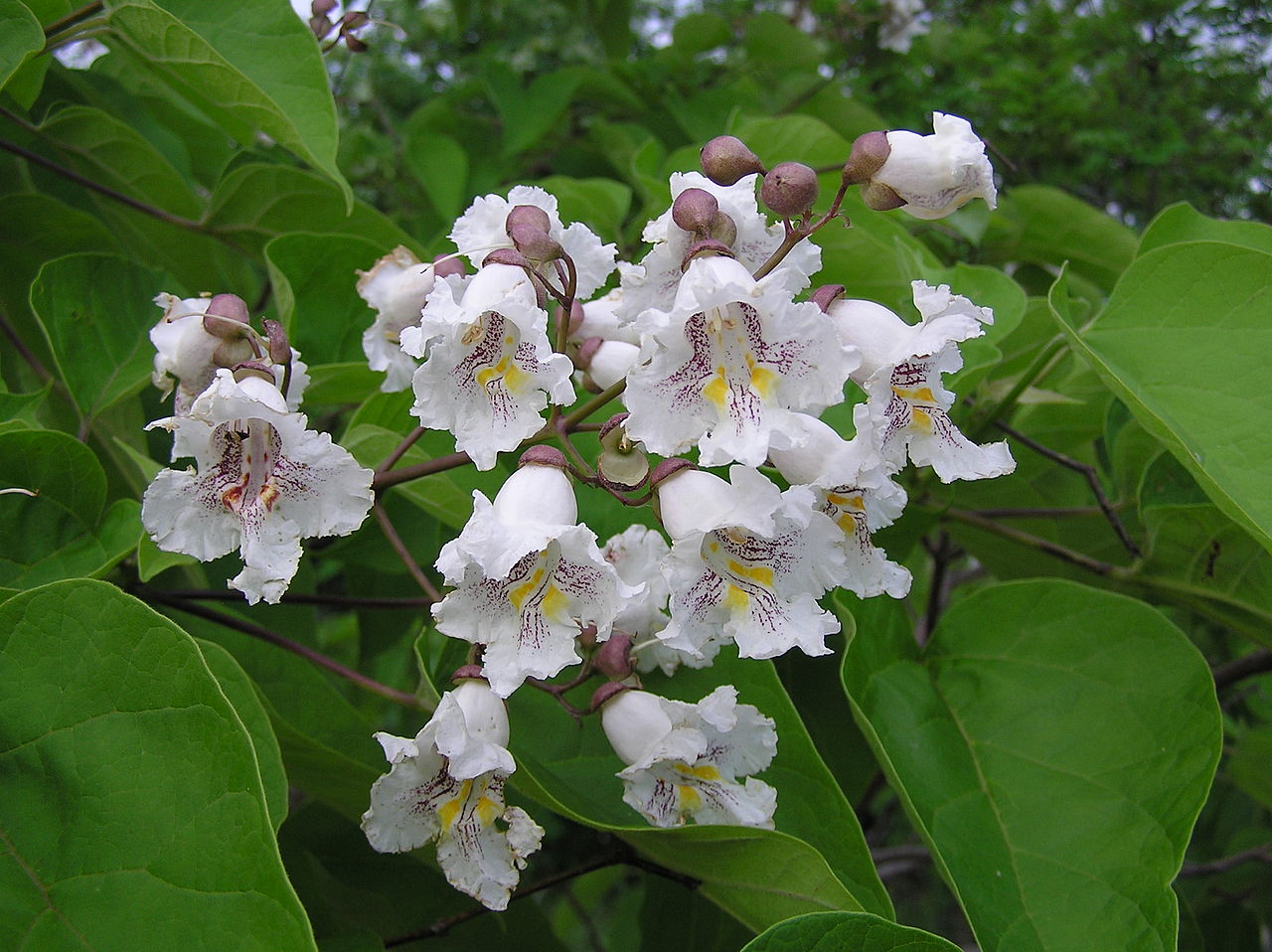
Catalpa has large tropical looking heart-shaped leaves that are up to 8 in long and held oppositely on the stems (often in a whorl with three leaves emerging from the same point along the stem). In spring the southern catalpa produces showy 6-10 inch branching flower clusters (panicles) at the stem tips. The white bell-shaped blossoms are 2 inches in diameter and patterned with small purple spots and two large orange markings at the throat.
The flowers are followed by long slender cigar-shaped pods up to 16 inches in length. The green pods ripen to brown in fall and split to release flat fringed seeds.
Grows in full sun to partial shade. Southern catalpa prefers moist, well drained soils but is adaptable. Hardy for zones 6-10.
Spectacular spring flowers and beautiful bright green foliage make the catalpa one of the South's most distinctive and best loved native trees. Used as an ornamental, accent, specimen, or shade tree. It is a valued ornamental tree with large foliage and showy clusters of flowers in the spring. When grown as a specimen many gardeners drastically cut back the large branches of their catalpas each winter. This radical surgery is called pollarding and the result is a tree with a thick trunk, very compact crown and very large beautiful foliage.
Catalpa also has some limited use in the forest products trade for fence posts, rails and crates.
This tree has been widely planted and naturalized outside its native range because it is the host plant for a caterpillar commonly called the catawba worm. These are a popular fishing bait for southern freshwater fish.
All across the American Deep South the catalpa tree is seen, often stripped bare of it's leaves by hungry caterpillars. This means only one thing - it's time to go fishing! The foliage is quickly replaced in a few weeks and the cycle can be repeated several times in a season.
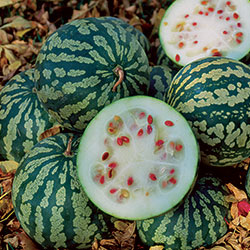
This variety has vivid red seeds and a light green rind with dark green stripes. Fruits can be stored for up to a year. Extremely productive, drought tolerant, and resilient. 90-100 days.
Click here for Citron Melon Recipes
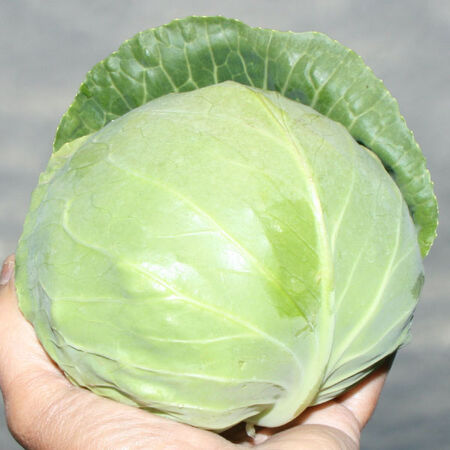
Children tend to prefer Katarina to other varieties because it is much milder, even sweeter, than most others, without a trace of bitterness. Great for slaw and salads, it also holds up well in stir fries.
Beating all other varieties to harvest by several weeks, Katarina hybrid is a very sweet, compact summer cabbage you can grow in large tubs and raised beds as well as the vegetable garden. It earned its national All-America Selection award with quick growth, delicious flavor, and smooth texture.
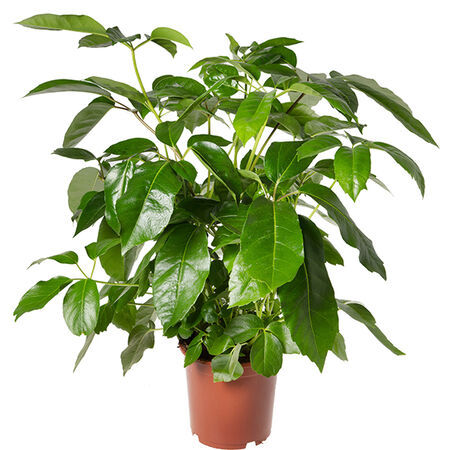

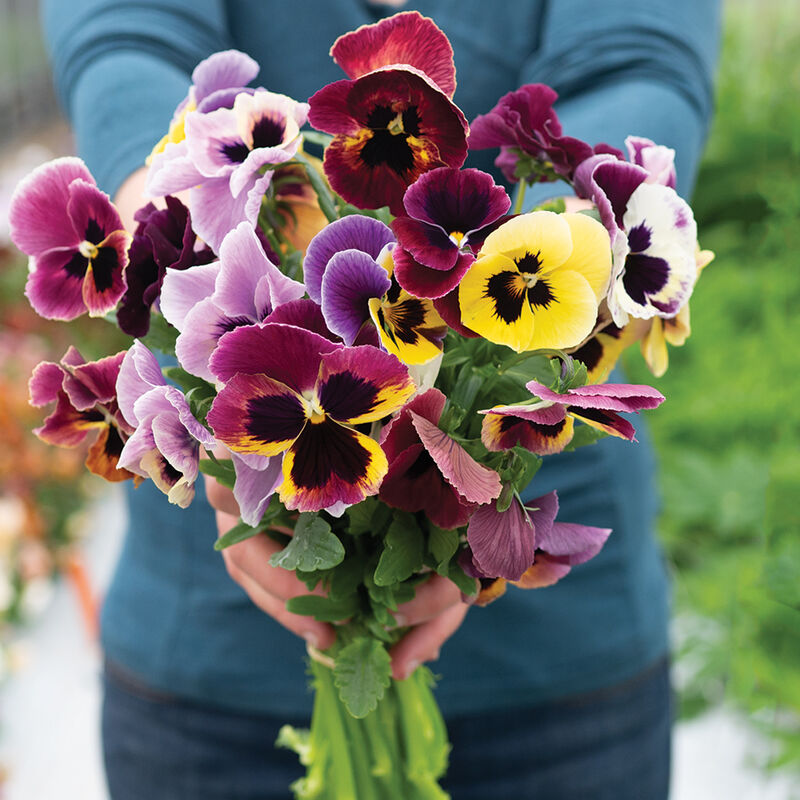
These plants provide large flowers on long stems ( for pansies ). Plants grow 16-22 inches tall .Harvest when the flowers are starting to open. Stems lengthen over time. Expect a vase life of 5 to 7 days. Edible Flowers: Decorative and edible garnish for salads and desserts with slight wintergreen flavor. While a popular choice for brightening up salad mix, the flowers are also good for candying.
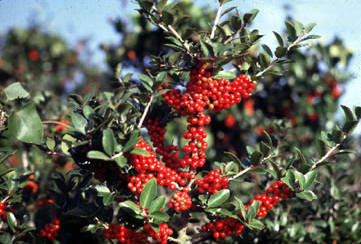
The leaves are small, leathery and bright green and are not prickly like other hollies. The flowers attract bees and butterflies. This holly can rapidly reach 10 to 20 feet tall and 8 to 12 feet wide, so allow proper spacing when planting multiples. It will form thickets unless the suckers are removed.
Though occasionally used for hedging, it is primarily used for landscaping. The wood of the Ilex vomitoria is heavy and hard, making it useful for turnery, inlay work, and other woodenware. The plant is also culturally significant: Native Americans used the leaves and stems to make a tea containing caffeine, a unique quality in a North American plant. Rediscovered in modern times, yaupon tea made from dried leaves is now commercially available. Add this picturesque and useful plant to your garden today!
Grow as a container plant or outside in zones 7-9.

Hardy to zone 7.
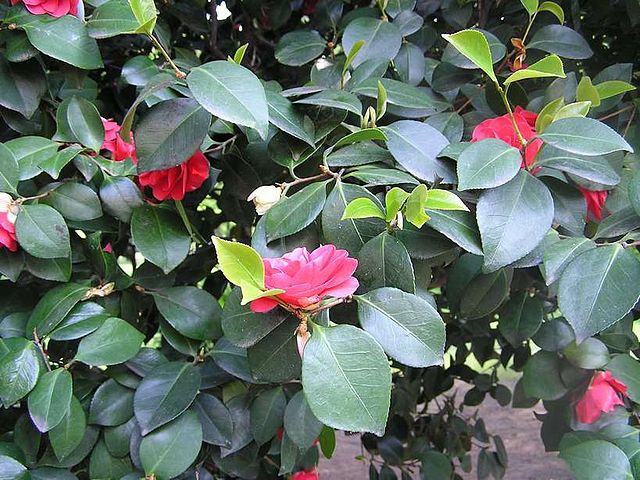
Camellia japonica wants to grow in a rich, acid soil with part shade or full sun and can be cultivated as both a shrub or small tree. In addition to its aesthetic appeal, an edible oil called "tsubaki oil" can be obtained from the seeds. Explore the thousands of cultivars available and bring the beauty of this graceful plant into your home garden.
It is native to Japan and is well-known for its beautiful and vibrant flowers. Camellia japonica is highly regarded for its ornamental value and has been cultivated for centuries in Japan and other parts of the world.
Best suited for zones 7-9, but can also be grown as a container plant in cooler zones.
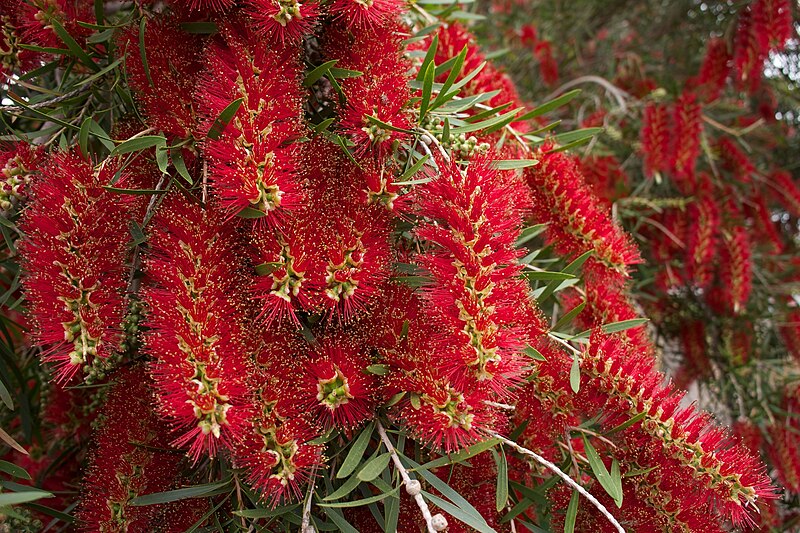
'Captain Cook' bears brilliant scarlet flower spikes. This evergreen shrub or small tree gets its species name citrinus from the lemony smelling oil glands present in the olive green, lance-shaped leaves. Spring to summer flowers are terminal, axillary, and crimson colored.
Plant in neutral to acid, moderately fertile soil in full sun. This plant is tough and makes and excellent hedge. Regular prunning is not necessary. If you do prune, immediately after flowering is best. Does very well in containers.
Zone 8-11 outside, grow in containers and bring inside for cooler zones.
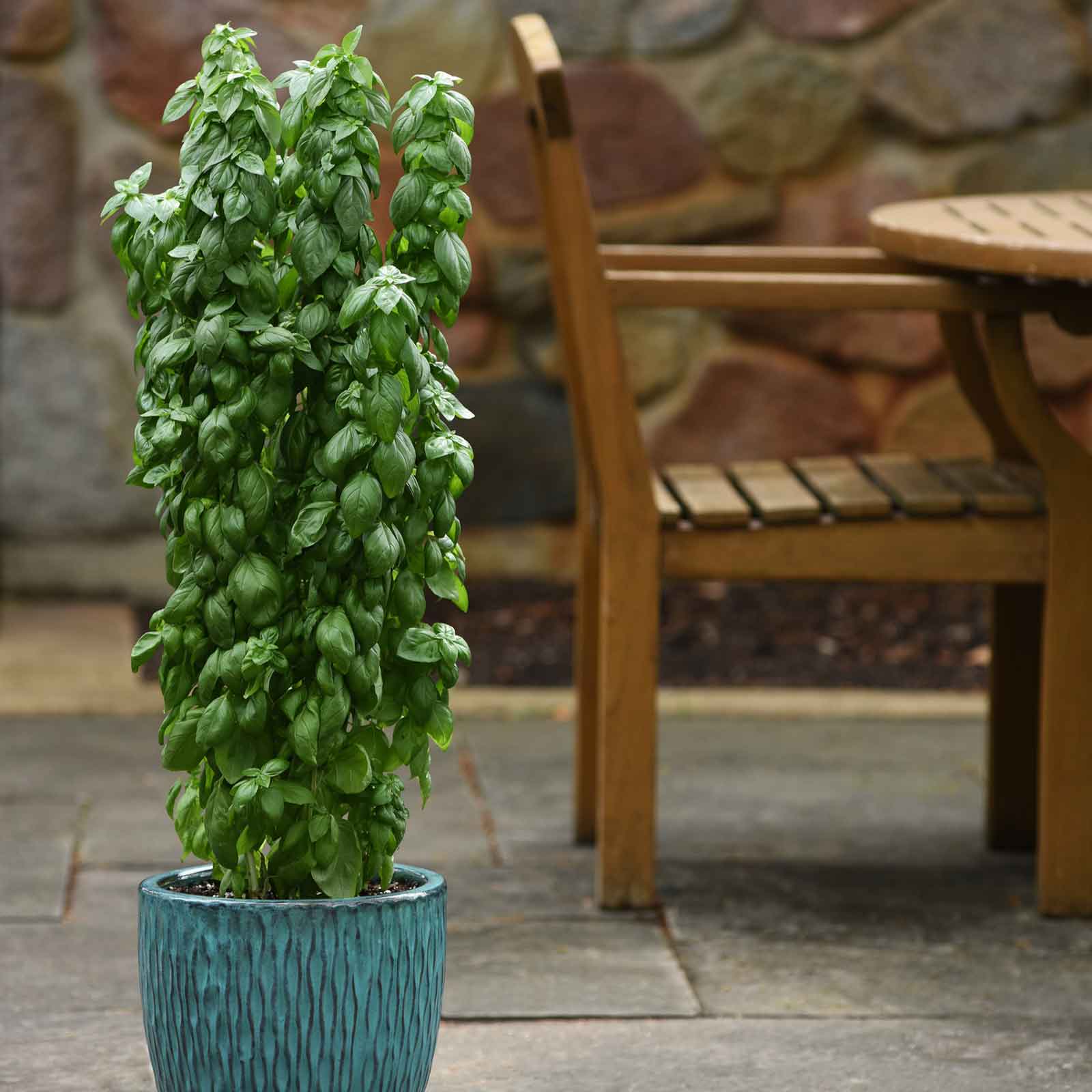
Named for its unique growth habit which features tall, upright stems, the leaves of the plant are a vibrant shade of green and have a glossy, slightly ruffled texture. It is beautiful in pots, and this boldly flavored basil is slow to bolt. 65 days.
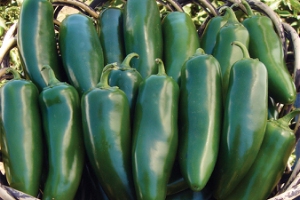
Produces high quality, uniform, dark green fruit making it ideal for fresh and processing. Truly "mammoth" in size, this jumbo jalapeño is very adaptable for the most discerning markets. Superior yields complement its excellent fruit quality. Continuous set provides for extended harvest window. 72 days. Disease Resistance: Potato Virus Y, Tobacco Mosaic Virus.
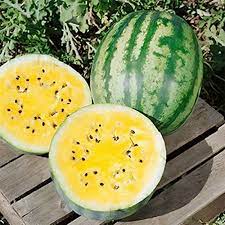
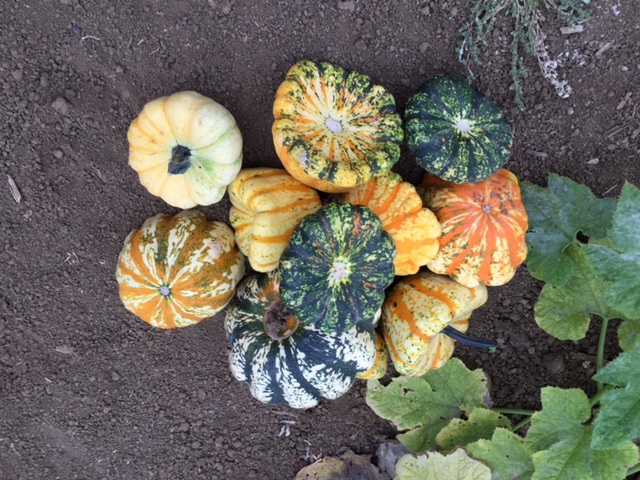
Bush plants maturing in 65 to 70 days. Bush habit allows for tighter spacing and good harvest of highly ornamental fruit. The bright disc shaped fruits are multi-colored and resemble sunflowers. 90-110 days.
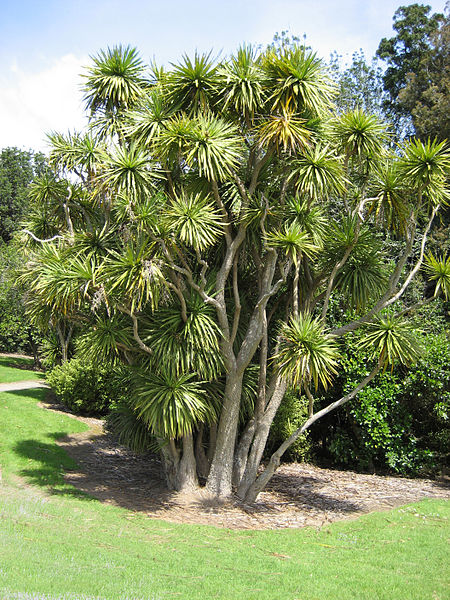
Cabbage Tree tolerates a wide range of soils ranging from wet boggy conditions to dry ones. If grown outdoors, it does best in moist, fertile, organically rich, well-drained soils in full sun to part shade. When grown in containers outside on patios in summer, it can be brought in over the winter or grown indoors year-round as a houseplant. If grown in a container, keep soils consistently moist in summer but reduce moisture indoors in winter and site the plant in bright sunny spots in the home or greenhouse. Also note that container-grown plants rarely flower.
Cabbage Tree has a taproot that needs the root space of a large and deep container for best growth. Young plants consisting of a fountain of grass-like leaves with no trunk are often sold as houseplants. Zones 8-11, or inside plant for colder zones.
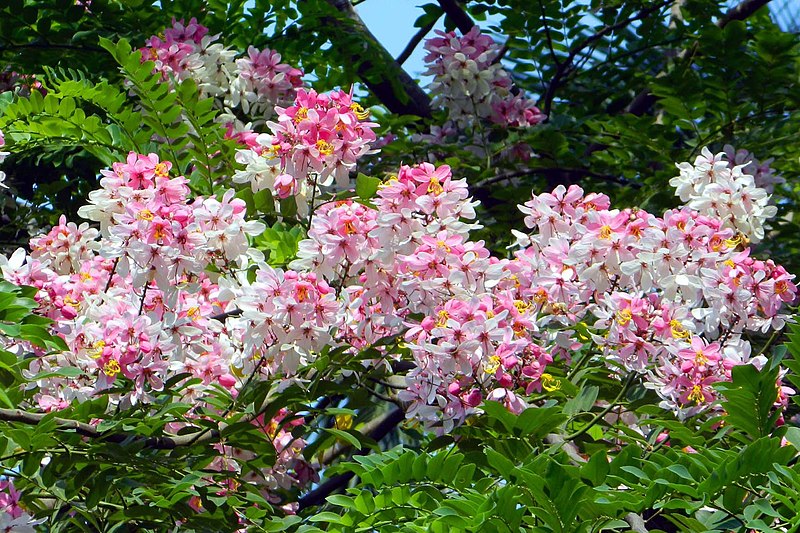
Lovely, tropical, rich green, pinnate foliage. Briefly deciduous during dry season. The flowers range in colour from pale pink to crimson with yellow coloured stamens and are found in open clusters. The ground under the tree is covered with a beautiful carpet of pink towards the end of the flowering season.
For zones 9A through 11.
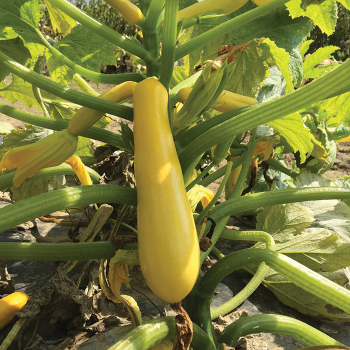
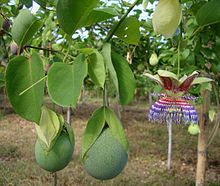
Flowers are greenish-white and purple, huge, up to 4-6 inches in diameter. The sepals are greenish-white, heavily speckled with purple spots inside, green outside. The petals are green white and heavily spotted with purple. The crown consists of four rows of filaments, white with purple stripes. The flowers are pendulous and very fragrant.
The fruits are oval or spherical, about 2 inches long and 2-3 inches wide. They are greenish yellow to light orange and the external shell is extremely hard. They are edible and taste of grapes.
The name maliformis name means "apple-shaped".
Vines are self-fertile, and should be grown on fences or trellises.
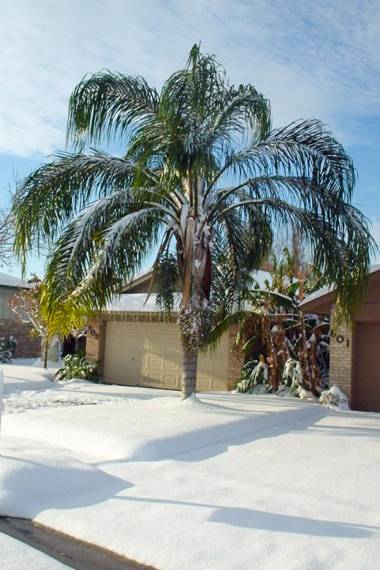
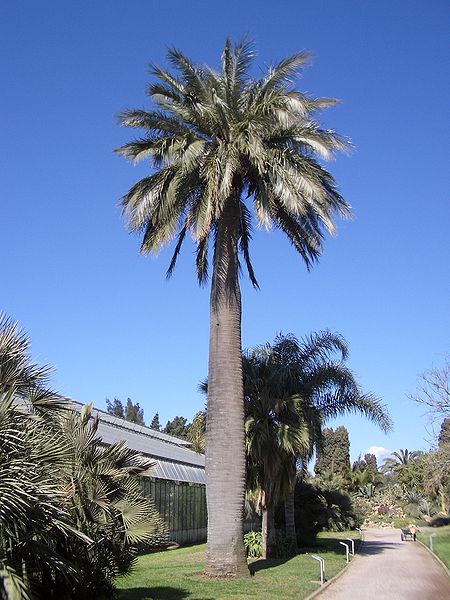
It is highly drought tolerant but will also do well in cold and humid conditions. It does not need hot summers to grow well and in winter it can take severe frost down to -16°C (3°F) unharmed. For many temperate climates it is the only large pinnate palm which is cold-tolerant enough to be successful long-term. Many fine, centennial examples can be admired for instance in California, Australia and along the Mediterranean, in southern Switzerland, along the windy Atlantic coast of France and even in Britain. And there are many other areas where it would do well but has not been tried much.
Germination and establishment are slow but easily accomplished and young plants are sought after and of high value as they are rarely found in the nursery trade.
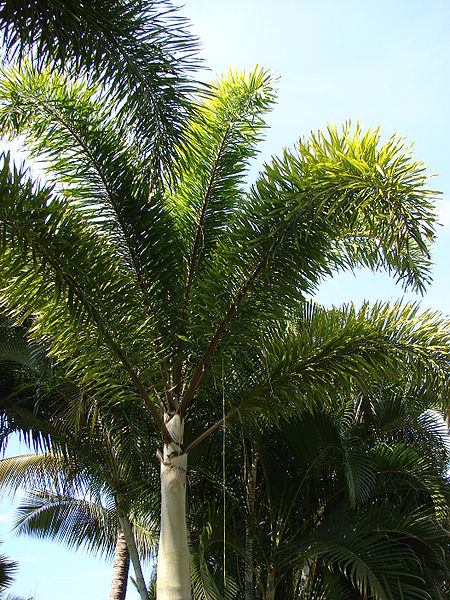
The trunk is self-cleaning, slender, gray in color, tightly ringed and slightly swollen at the base. It's crown shaft is a creamy green and very smooth.
The Foxtail Palm is very durable and adaptable to many environments. Discovered growing in an open woodland rainforest, on eroded granite slopes reaching as high as 1300 feet. With a very deep root system the Foxtail can withstand a great variance in water and temperature.
It is moderately salt tolerant and grows well in a variety of soils but good drainage is a must. It loves sun, even at an early age. It can tolerate light frost and does well in temperate to tropical climates. Prolonged hot dry winds can cause damage to the fronds. The root system allows planting near walkways or structures. A fast grower - the Foxtail can grow as much as three feet per year. There are no major pest problems. Hardy to about 30 degress.
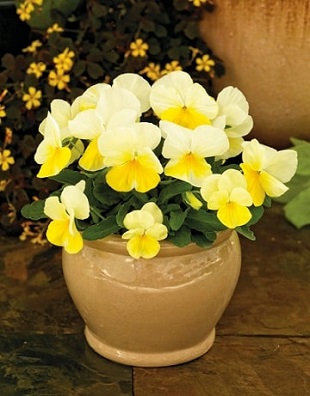
Representing the new wave in violas, ColorMax is a giant-flowered viola that is heat tolerant and fills pots easily, even under heat stress where standard violas suffer. ColorMax is a superb autumn performer and a great choice to start the season. This alternative to pansies comes in a number of eye-catching and unique colors that are extremely versatile—perfect for pots, packs, baskets and mixed containers.
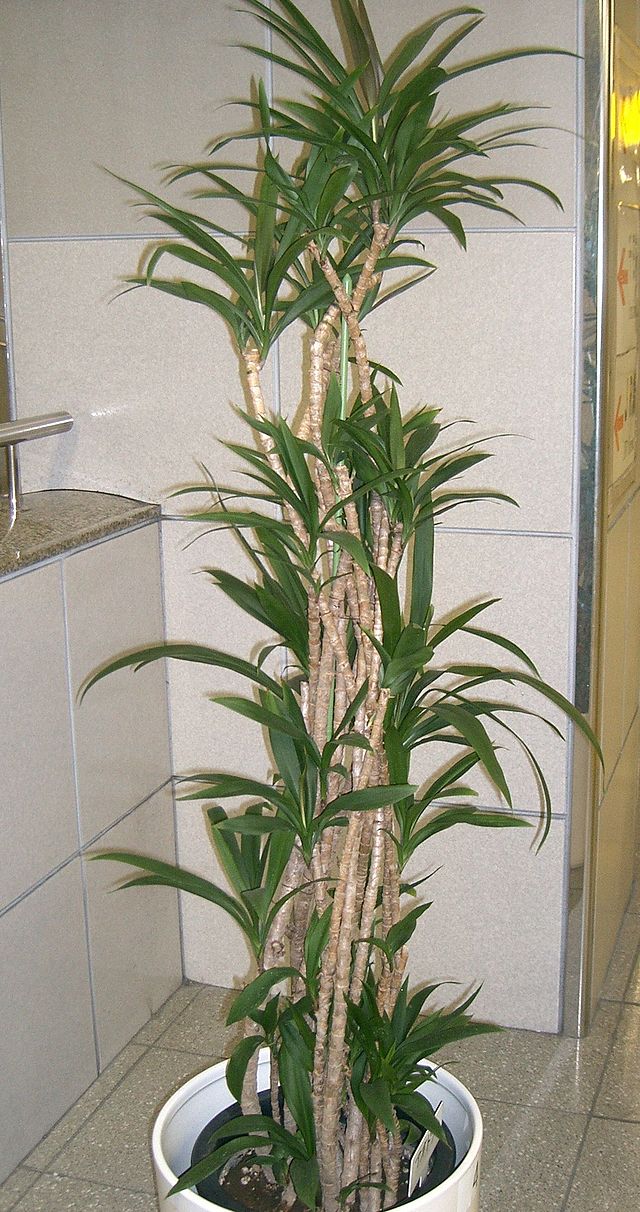
Showy inflorescences with bluish flowers are produced in spring. Cordyline stricta adapts well to both tropical and mild temperate climates and can take light freezes unharmed. It does best under filtered light, making it a nice houseplant specimen. Makes an excellent container plant and can be kept indoors for long periods. The plant can be pruned to any height and will reshoot readily
Great inside or patio plant, or can be grown full time outdoors in zones 8-11.
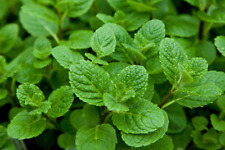
It is called applemint because the leaves when brushed give out a sweet scent that seems like a cross between spearmint and apples. The leaves have a slight fruity flavor.
Apple mint leaves are said to have certain medicinal properties. The crushed leaves of this plant are said to eliminate the pain caused by bee sting, wasp stings and other insect bites. They bring about a cooling effect on the affected part of the body.
The flowers can be used to make tea which if consumed when promotes digestion, cures many ailments such as intestine problems, stomach pain and refreshes the mind.
The Apple mint leaves also help in breaking down fat and accelerating metabolism level. The mint leaves contains nutrients like iron, potassium, calcium, vitamin A and C which replenish our body. The leaves are said to have anti-cancer properties.
Powdered leaves can be used to whiten the teeth. The essential oil extracted from the leaves is used in aromatherapy to cure acne, colic, cramp, colds, flu, stress, shock, asthma and travel sickness.
Soft gray-green round leaves are downy with a pronounced scent. One of the tallest garden mints, applemint reaches heights the other mints don't, sometimes clambering up two or more feet in height, but is best shorn down frequently to prevent bloom if the intent is to use it in cooking.
It's fuzzy leaves and stems have a distinct minty apple taste, and it lends its flavor to applemint jelly and couscous, as well as teas that will calm upset stomach and soothe body and soul. Like most mints, applemint can threaten the garden with too much of a good thing, and in its optimum growing conditions of part shade and moist soil will quickly introduce itself to neighbouring beds and lawns.
Plant it in containers, or bottomless buckets sunk into the garden bed to control its tendency to roam. Applemint is untroubled by pests in general and considered repellent of bothersome insects in the mixed border.
Keep applemint growing anywhere you want to enjoy its sweet fruity scent, and close to the kitchen to easily enjoy the wonderful flavor it adds to food.
A perennial for zones 5-9, but can be grown in containers inside just about anywhere.
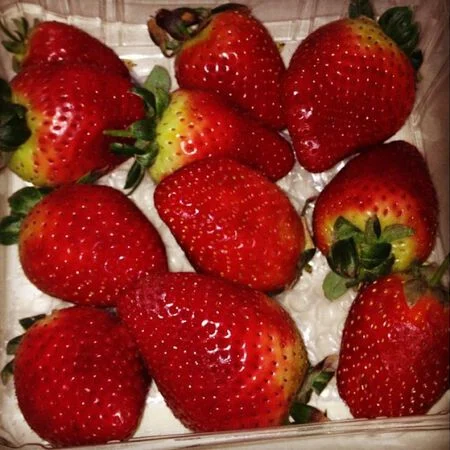
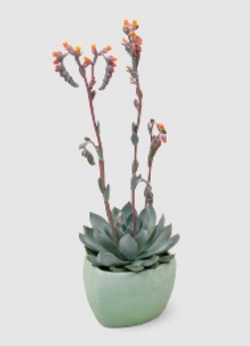
It has a compact, mounding habit. The plant multiplies by putting out offsets, or "pups," and forms a showy dense carpet of beautiful rosettes over time. Shown to best effect when grouped or massed, echeveria is an excellent container plant, but it makes great edging and ground cover for small spaces. It is a staple plant for green roofs and a perfect addition to a rock garden, a Mediterranean garden, and of course, a succulent garden.
Very easy-to grow, it thrives in warm, dry climates and does not tolerate frost. Pelleted seed for easy germination.
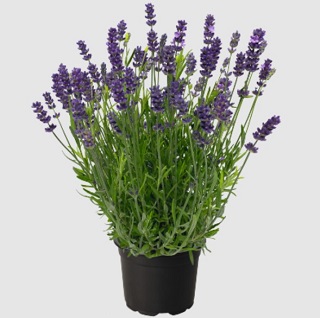
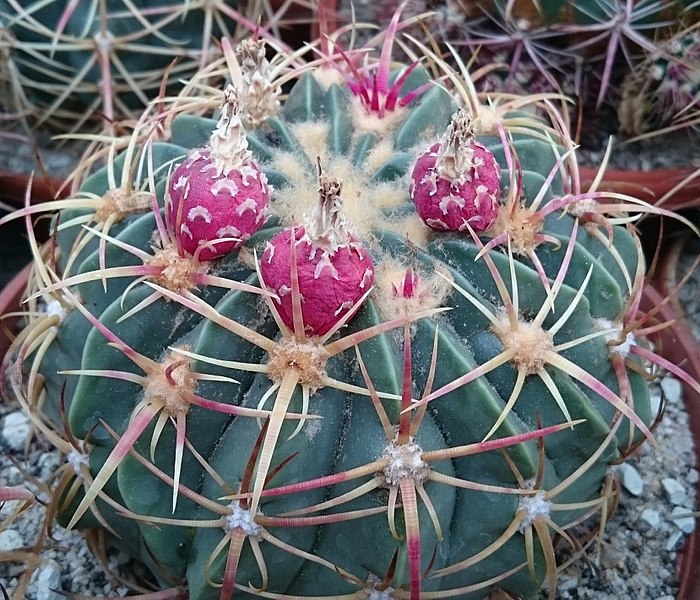
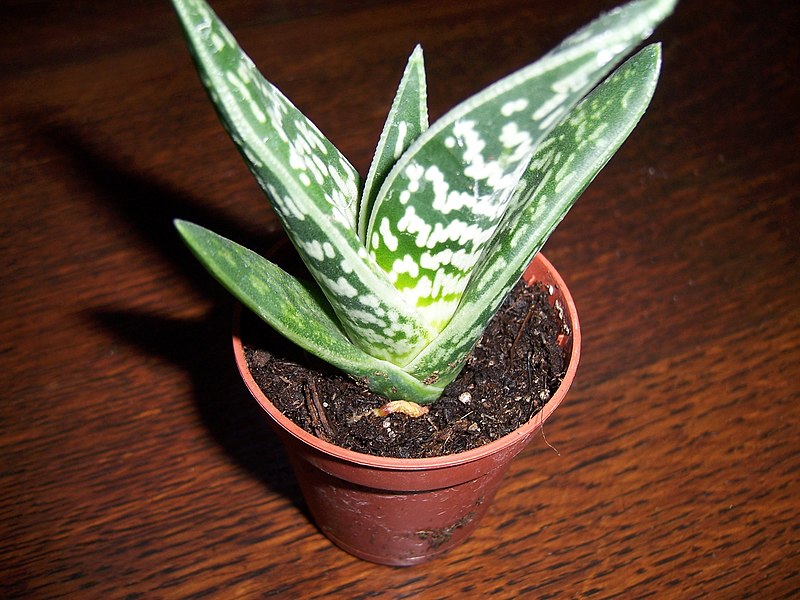
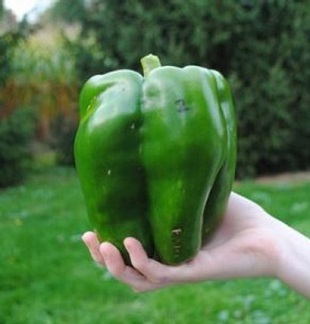
The plant produces heavy yields of 6" to 8" long giant red sweet bell peppers. Peppers turn from dark green to bright red when mature. Peppers have thick walls, are sweet, and juicy. Great in salads, salsa, and stuffed. Should be staked to support the heavy yields of giant peppers. 72 days.
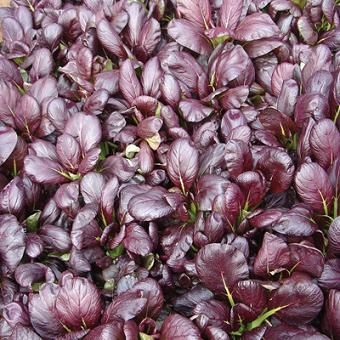
30-50 days. 30 days for baby greens, 50 days for heads. The striking appearance, crisp and sweet flavor, and high nutritional value of Violetta make it the perfect choice to use as a baby green or as a full-headed pac choi. The rich violet leaf tops contrast beautifully with green undersides and stems. A great source of vitamin A, calcium, and iron.
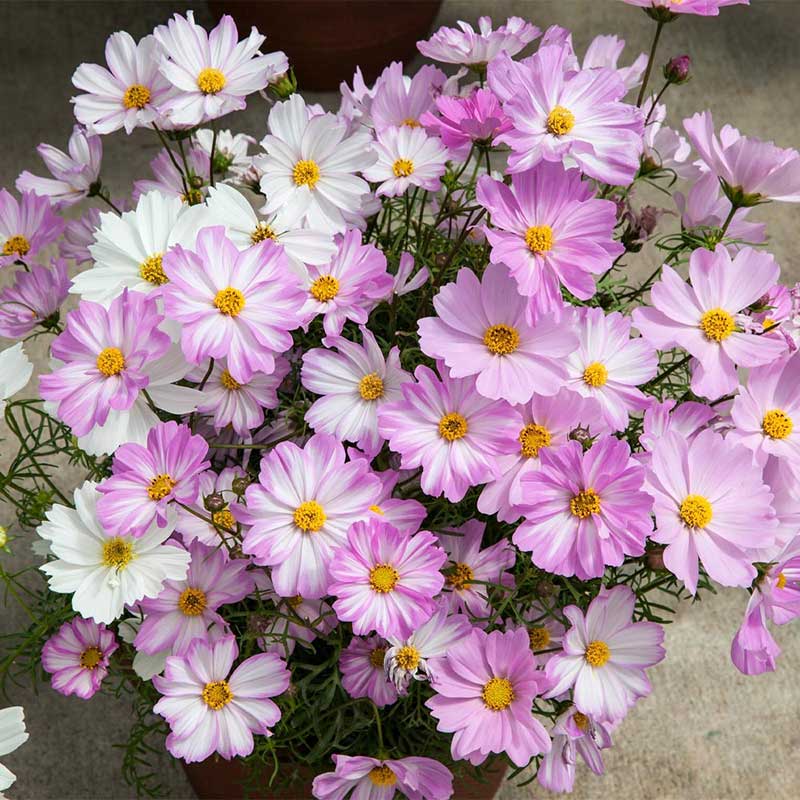
Attracts bees and butterflies, easy to grow and maintain, fast growing. Use in container garden, cut flower garden, landscaping.
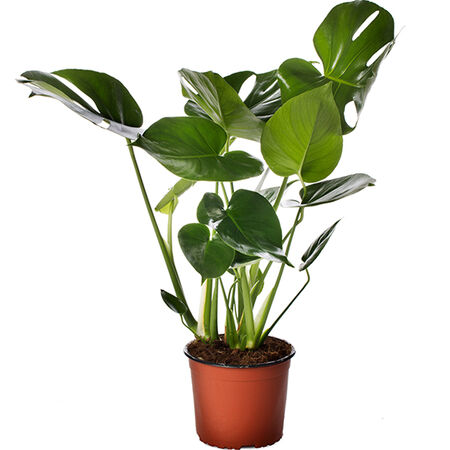
Seed Germination: Plant at least 2-3 seeds per pot. Bottom heat is helpful. Takes 14-28 days to germinate.
Black pepper plants make an attractive addition to your house or garden. Once grown, they develop dainty white flowers before producing fruit. The fruits will appear as clusters of round berries in a chain formation.
Conditions for growing black pepper plants require high temps, heavy and frequent rainfall, and well-draining soil, all of which are met in the countries of India, Indonesia, and Brazil where most of the commercial peppercorns are grown. Most growers in the USA grow these in containers inside the home or greenhouse. These warm loving plants will stop growing when temps drop below 65 degrees F. (18 C.) and do not tolerate frost; as such, they make great container plants. Situate in full sun with 50 percent or greater humidity, or inside the house or greenhouse if your region does not fit these criteria.
In its native habit of southern India, Black Pepper is an understory plant that climbs up trees and grows in dappled light. When grown as a houseplant, it needs moderate light in an east or west window and it should be placed directly on the windowsill or close to your light source if grown in a light garden. It does benefit from some direct sunlight but not hot noonday sun. Like other tropical plants, Black Pepper can be grown outside during the summer months and brought inside for the winter.
The flowers start growing at the leaf nodes of new growth. The small white flowers form pendulous spikes and then small, round, green peppercorns form in chains, which in time ripen to red. Growth slows down in the winter, yet it will fruit and flower year-round. The pepper plant can produce an abundance of peppercorns in a pot as small as 8-inches.
To fertilize, use a soluble or liquid fertilizer applied every two weeks when you water. Don’t over fertilize your black pepper plant, as a rule of thumb, the less light, the less often you fertilize, so outside in summer means more, inside in winter less.
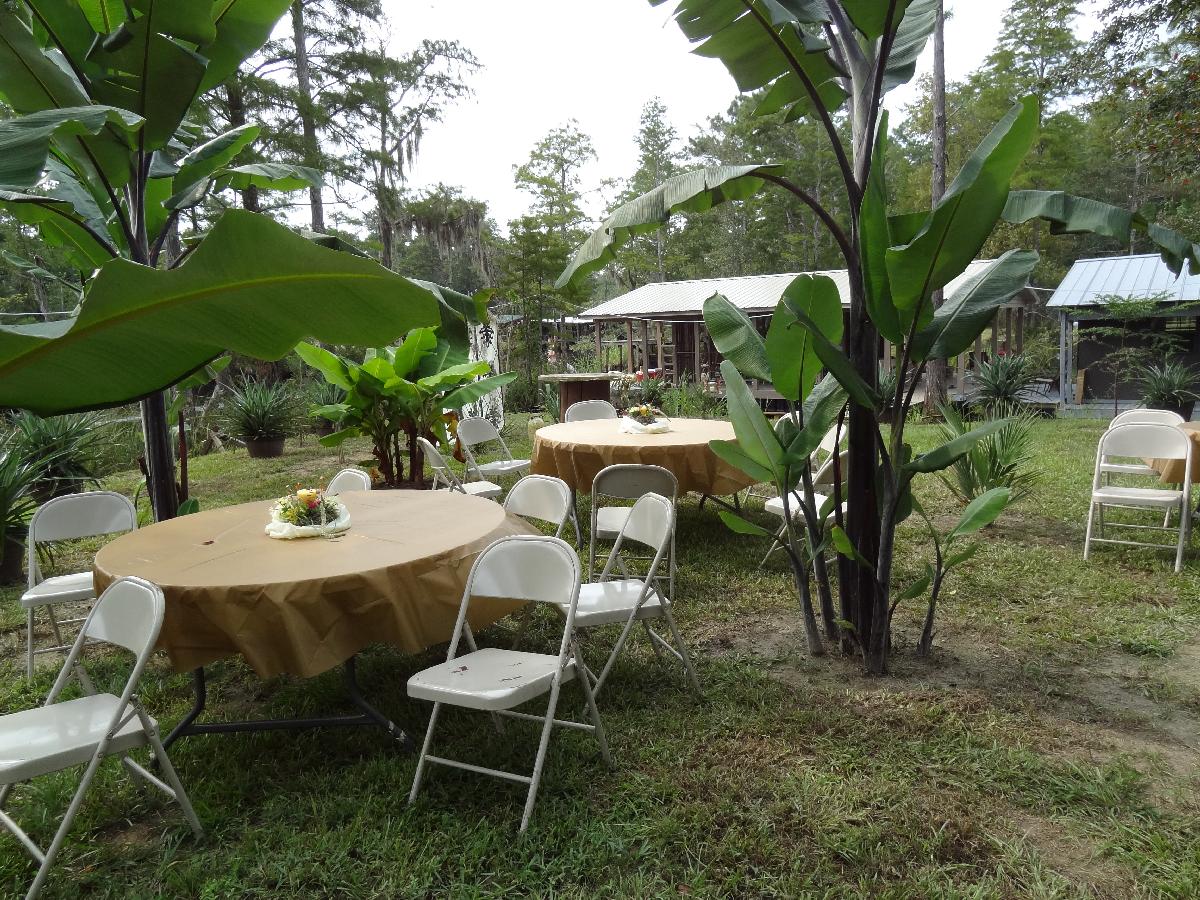
This is a wonderful, fast growing banana with tremendous ornamental appeal. The picture shows 2 year old plants started from seed growing on one of our bayou properties on the Gulf Coast. The more exposure to sunlight, the darker the stem gets. Will grow to a massive 18 feet or taller outside, or can be grown in a container where growth will be limited by container size. Very cold hardy, probably down to 15 degrees if mulched heavy, and loves hot, hot weather as well!
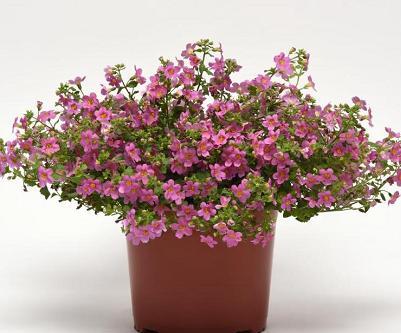
Multi-seed pellets, each pellet contains several seeds.
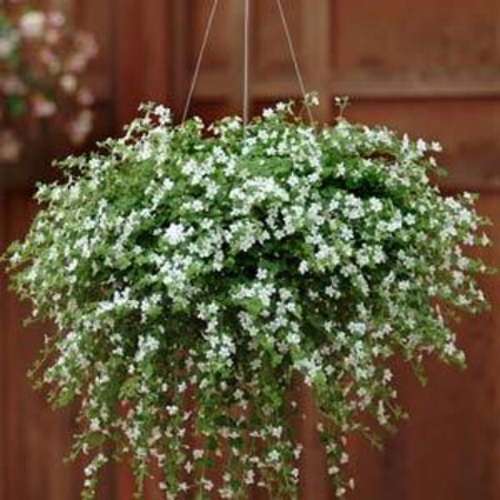
Multi-seed pellets, each pellet contains several seeds.
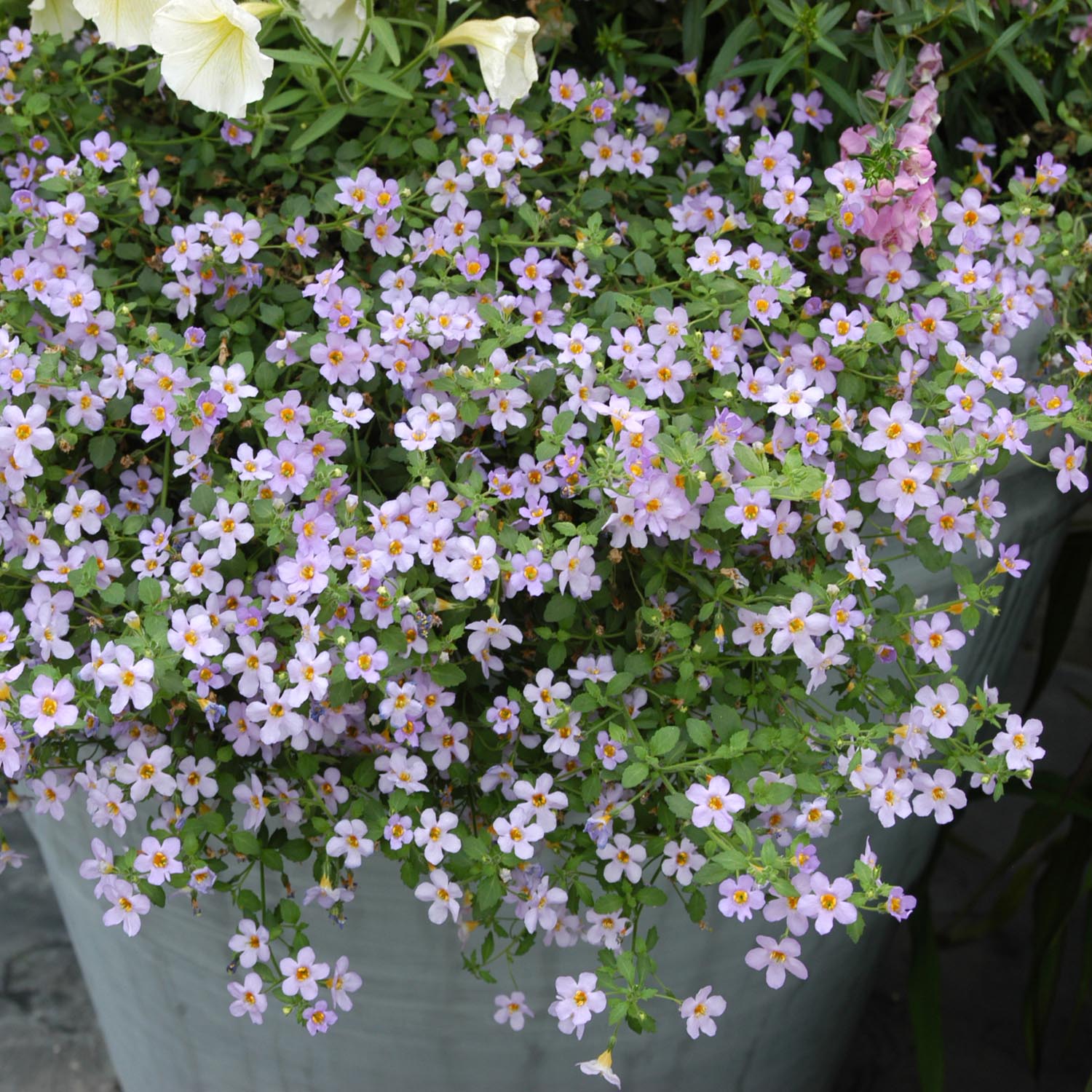
Multi-seed pellets, each pellet contains several seeds.
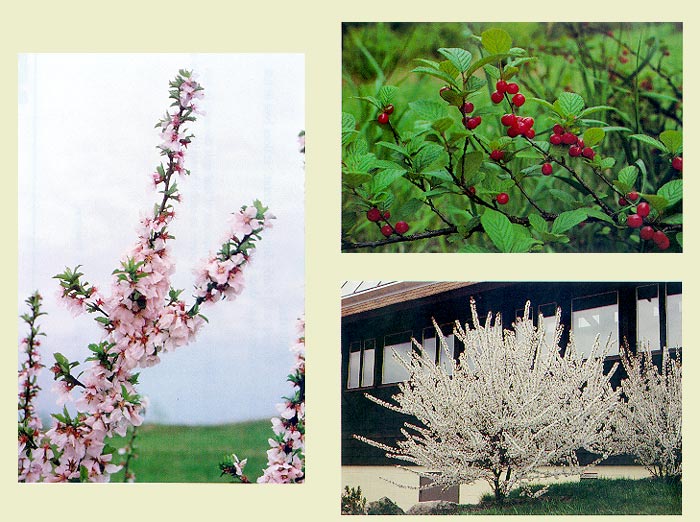
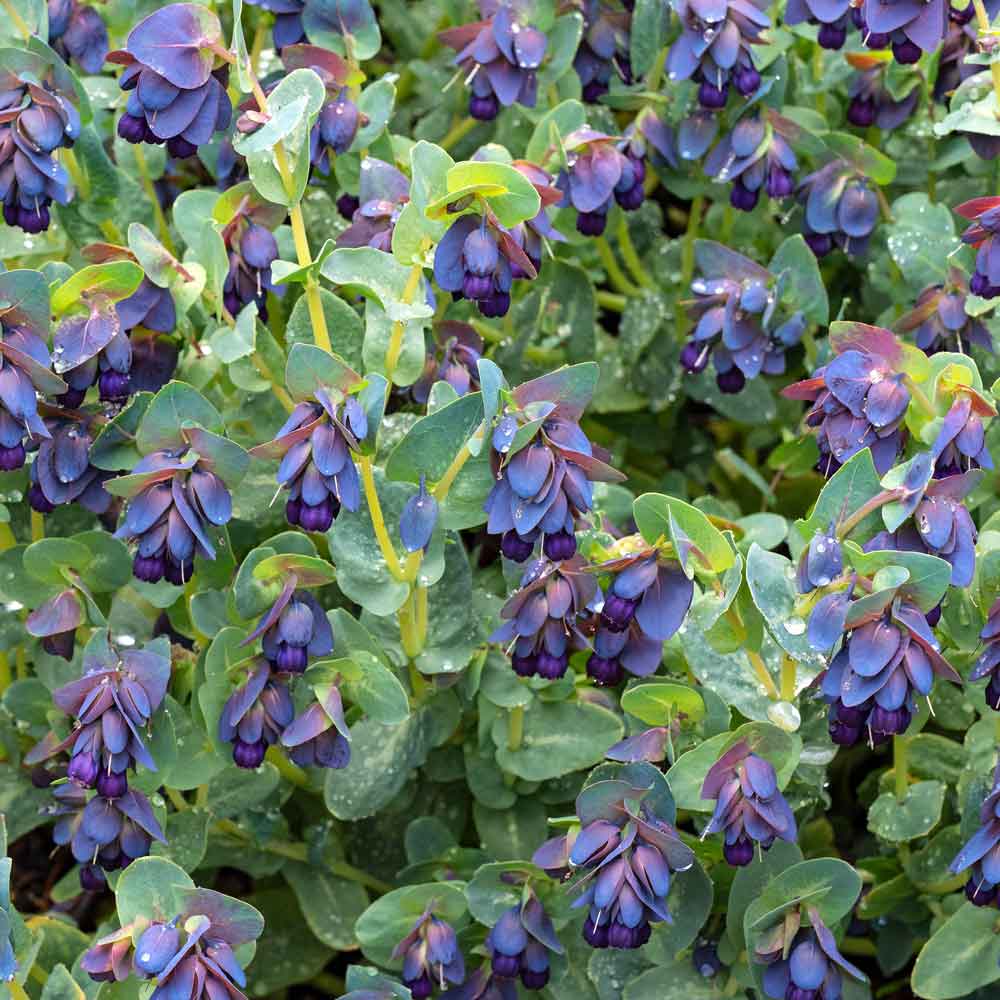
Honeywort produce beautiful plants with purple-blue flowers that bloom in the summer. The flowers have a unique shape and texture, with a tubular structure that flares out into five petals. One of the most striking features of honeywort's flowers is the color. The purple-blue hue is rich and vibrant and can vary in intensity depending on the light and growing conditions. The color is also enhanced by the glossy surface of the petals, which reflects light and creates a luminous effect.
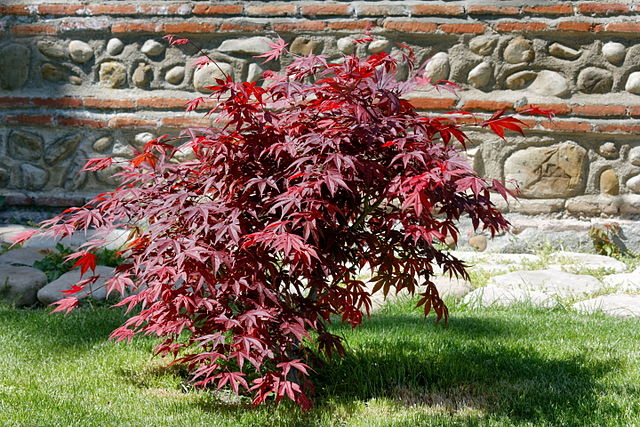
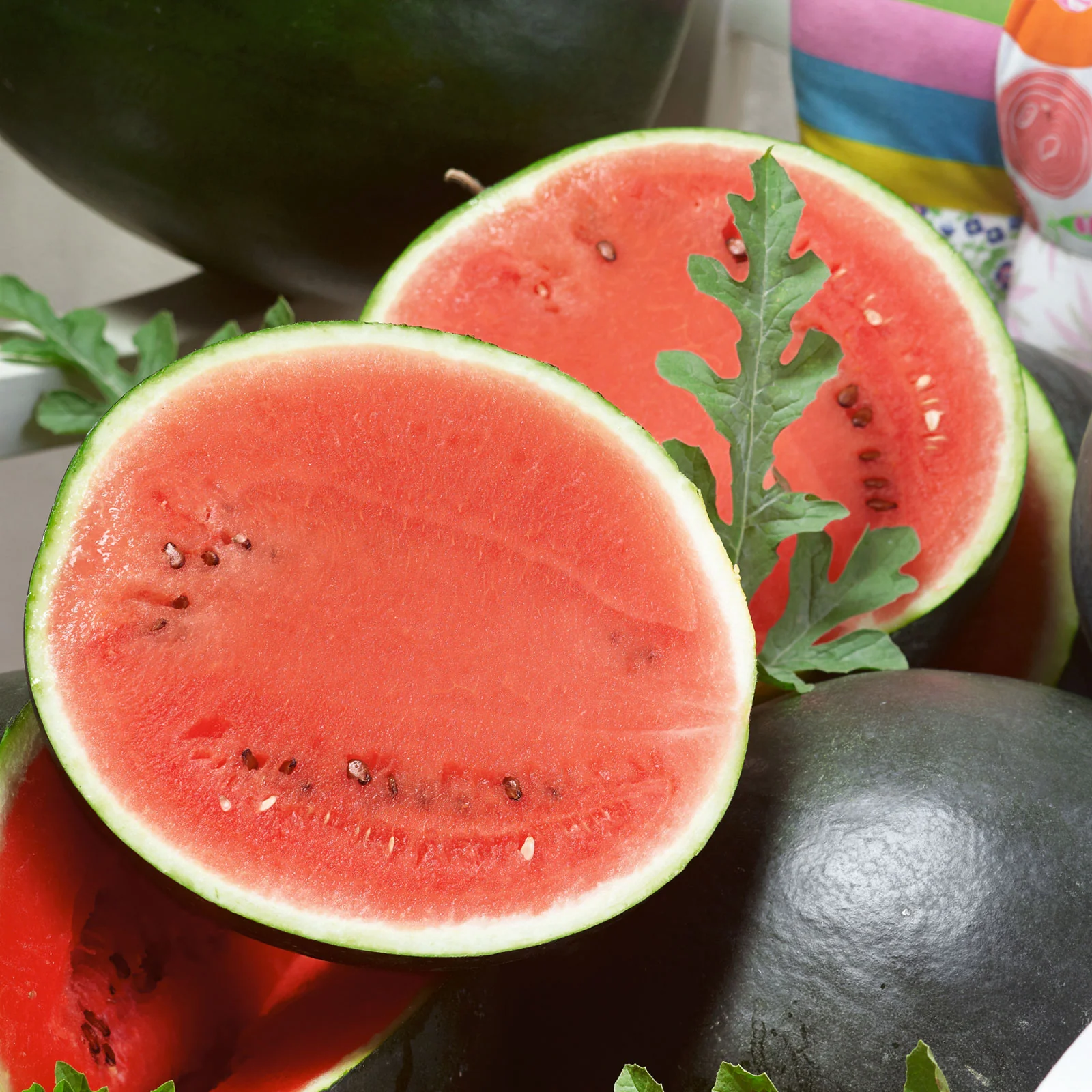
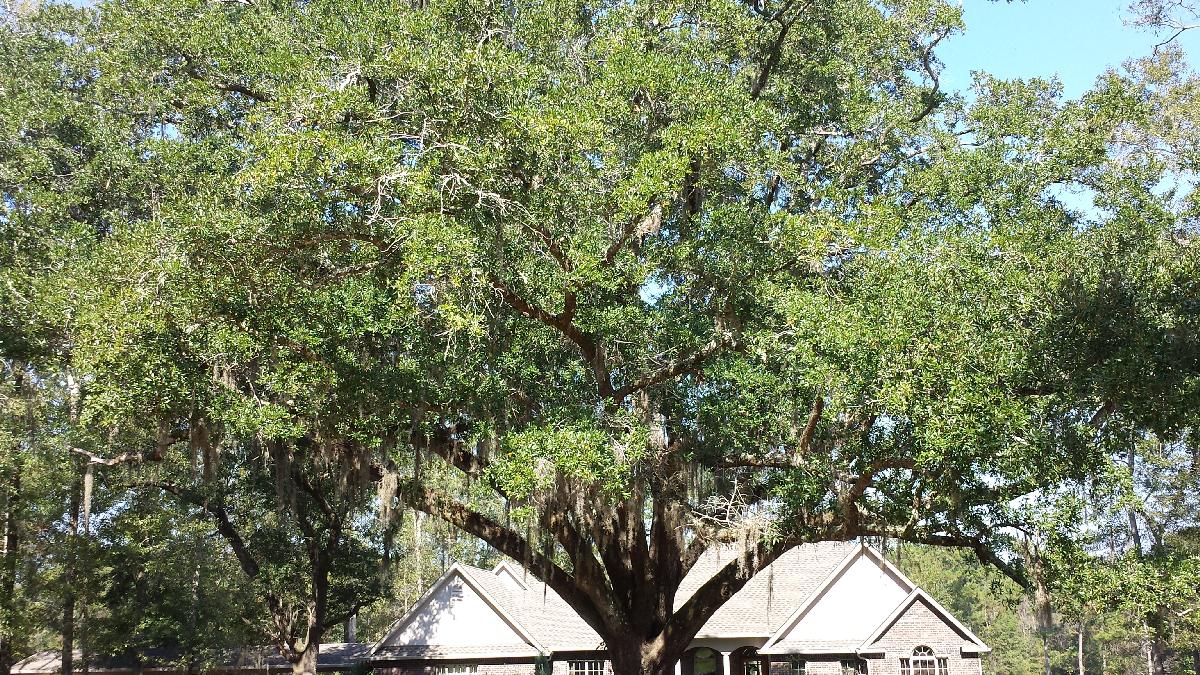
Good for zones 8-10. Massive, spreading Evergreen tree with shallow grooved red-brown bark and leathery, shiny dark green leaves. Mature tree can reach height of 80 ft. and spread out to 100 ft. wide. Native to Southern US from Virginia to Florida.
Depending on the growing conditions, live oaks vary from the shrubby to large and spreading: typical open-grown trees reach 15 meters (50 feet) in height, but may span nearly 50 meters.
Their lower limbs often sweep down towards the ground before curving up again. They can grow at severe angles, and Native Americans used to bend saplings over so that they would grow at extreme angles, to serve as trail markers. They drop their leaves, and grow new ones, within a few weeks in spring. The bark is furrowed longitudinally, and the acorns are small, but long and tapered. Trees frequently have rounded clumps of ball moss or thick drapings of Spanish moss, and mistletoe is often found on them.
Southern live oak can grow in moist to dry sites. They can withstand occasional floods and hurricanes, and are resistant to salt spray and moderate soil salinity. They tend to survive fire, because often a fire will not reach their crowns. Even if a tree is burned, its crowns and roots usually survive the fire and sprout vigorously. Furthermore live oak forests discourage entry of fire from adjacent communities because they provide dense cover that discourages the growth of a flammable understory.
Although they grow best in well-drained sandy soils and loams, they will also grow in clay. Live oaks are also surprisingly hardy. Those of southern provenance can easily be grown in USDA zone 7 and the Oklahoma Live Oak (Quercus virginiana var. fusiformis), having the same evergreen foliage as the Southern variety, can be grown with success in areas as cold as zone 6. Even with significant winter leaf burn, these trees can make a strong comeback during the growing season in more northerly areas such New Jersey, southern Ohio, and southern Connecticut.
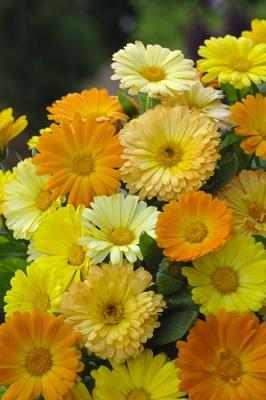
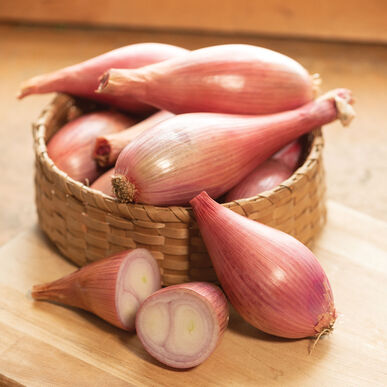
Iridescent peachy pink skin covers uniform bulbs. Also called "banana shallots", eschalions are highly desired by chefs because their elongated bulbs are easy to peel and cut, and their sugar profile is perfectly suited for caramelizing. Long storage potential. AAS Regional winner for the Southeast, West/Northwest. 100 days.
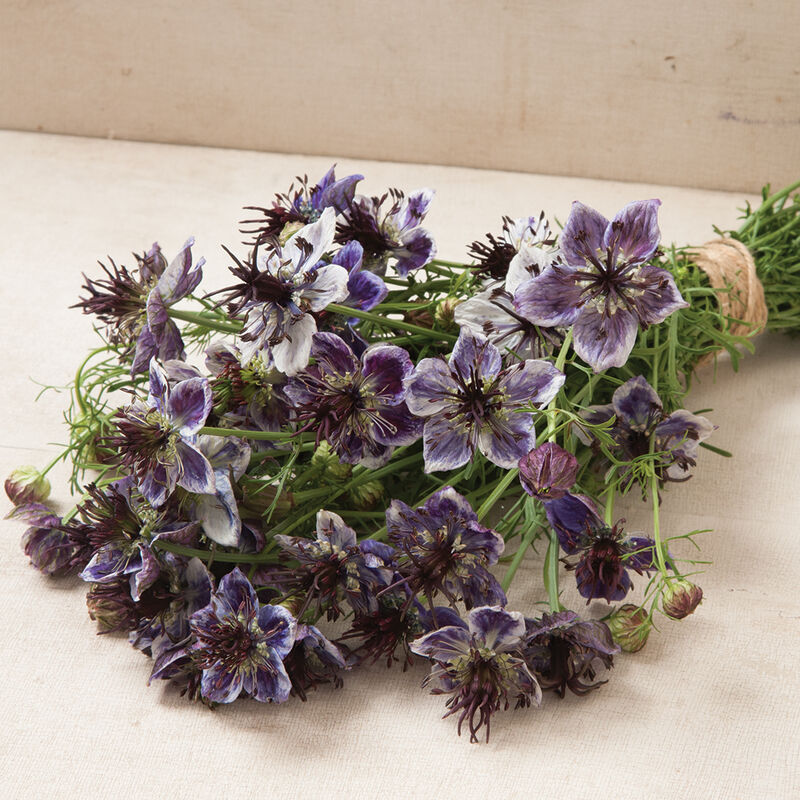
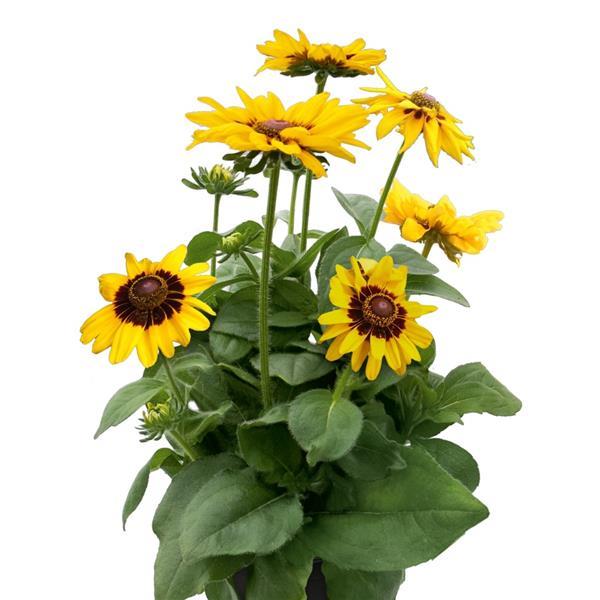
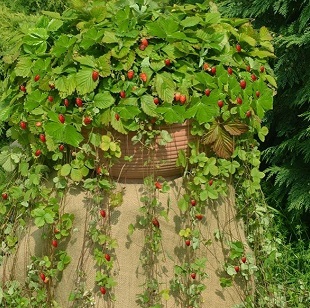
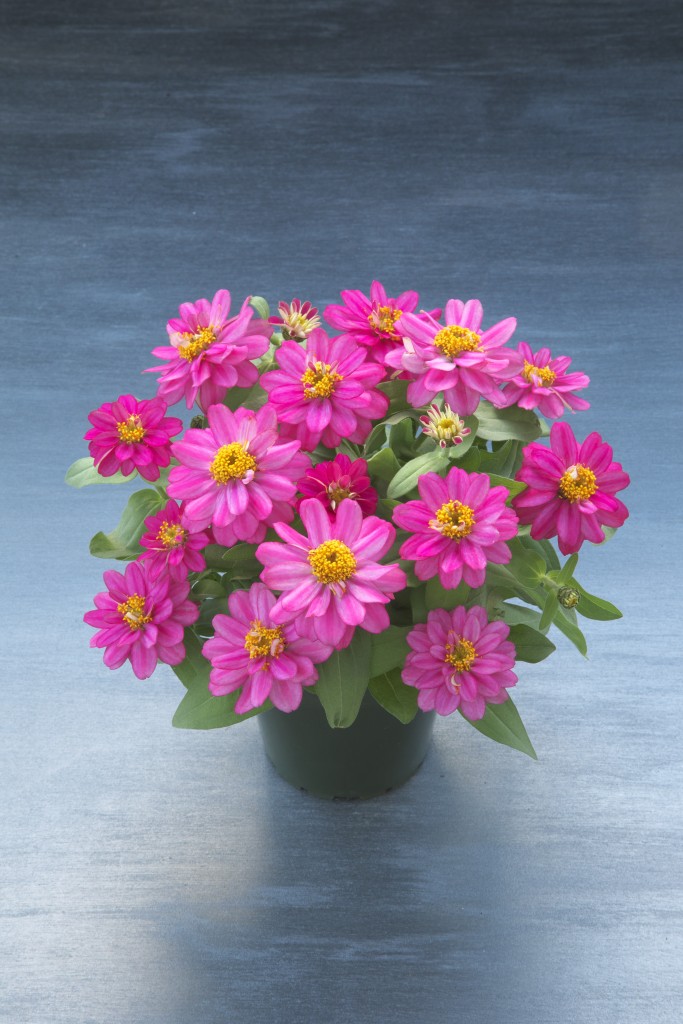
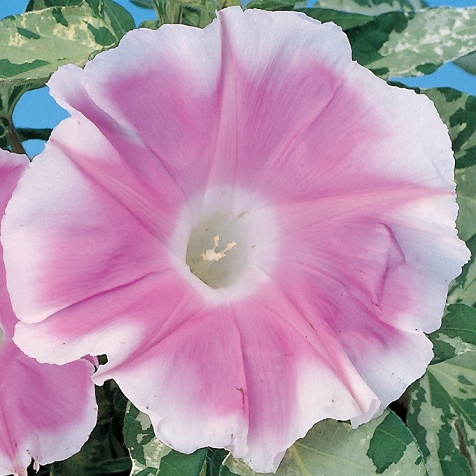
A dwarf morning glory with ornamental foliage and a mounding habit. Use as a component plant in mixed containers and hanging baskets. Plants in the garden spread 1 foot.
Sun Smile is a dwarf morning glory with a mounding habit that spreads approximately 12 inches. The plant features marbled green and white foliage with either bright red, violet, blue or pink colored blossoms edged in white. The flowers open each morning adding color and interest to the foliage. Sun Smile is quite unique and is an excellent component in mixed containers and hanging baskets. Plants in 4-5-in. pots will spread 6-8 inches and plants in the garden will spread to 12 inches.
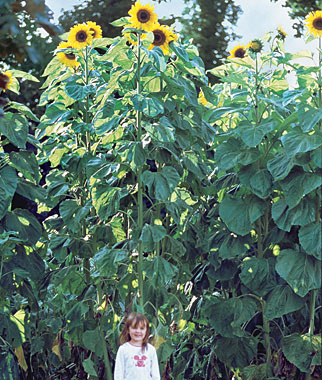
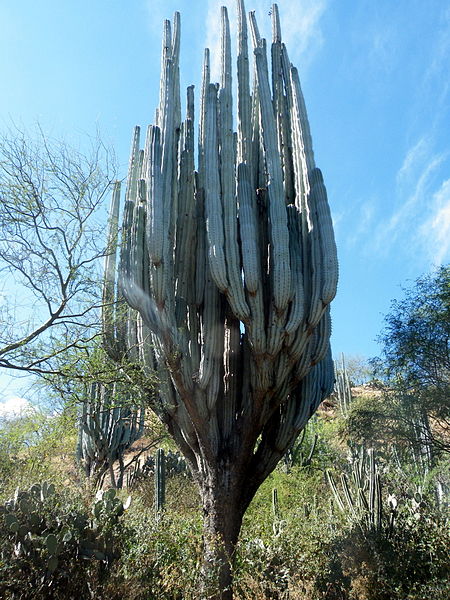
The edible, delicious fruits can be eaten raw or used to prepare jams and jellies. The seeds can be ground into a flour to make tortillas and the like.
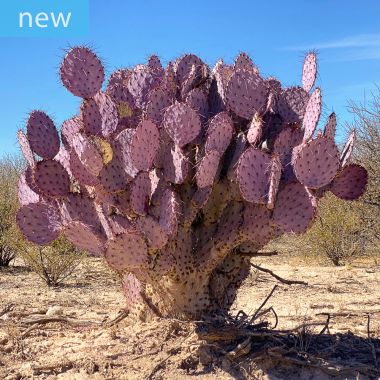
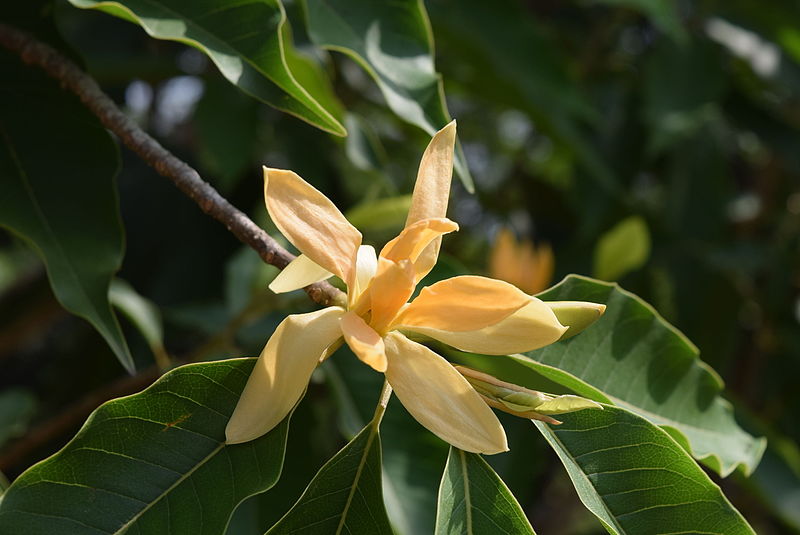
Also known as Champa, Yellow Champa, Golden Campa or Fragrant Champa is highly revered by the followers of Hinduism and Buddhism. They use Michelia flowers during religious ceremonies. Tibetans believe that the Buddha of the next era will find enlightenment under the flower canopy of the champaca tree.
Michelia has several ornamental, commercial and medicinal uses too. For gardeners, it is an excellent choice as a houseplant or as companion plant in landscapes. Commercially, the timber of Michelia is used for almost anything from cabinet-making to firewood and flowers are grown to sell at cut flower shops. The extract from the flowers of Michelia Alba is used in preparation of the famous 'Joy' perfume. Medicinally, the tree has wide applications; the bark is used to prepare tonic, the oil extracted from flowers is used to cure toughs and rheumatism, and for relieving eye troubles and gout.
Michelias are easy to grow and maintain. They love a lot of light and warmth but filtered sunlight. The best location for Michelia is the place where it receives direct and ample sunlight in early morning but partial light for the rest of the day. Suitable for containers, Michelias has shallow and brittle root system. It likes moderate watering in acidic and well-drained soil. As a general rule, water lavishly when the plant is young to allow it to develop good root system. Water mature trees moderately and feed with a general purpose fertilizer during spring. Prune in winter when plant goes dormant.
Outdoors in zone 10 or higher, Michelia can gain a height of 75 feet or more in suitable conditions. The tree bears large leaves that resemble the leaves of Mango tree. The tree booms from May to October and produces abundance of star-shaped flowers that fill the entire surrounding with mesmerizing scent. Flowers are usually golden-yellow, golden-orange and creamy-white.
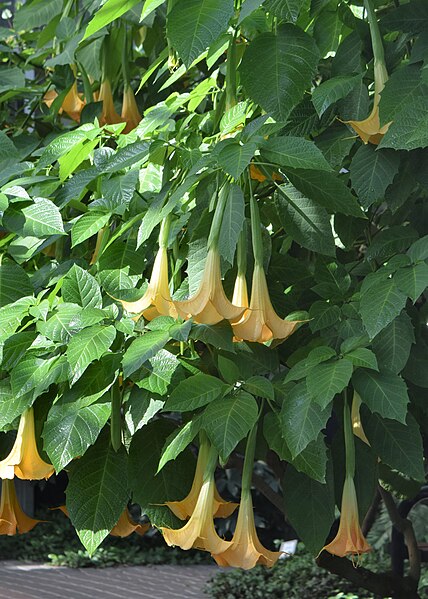
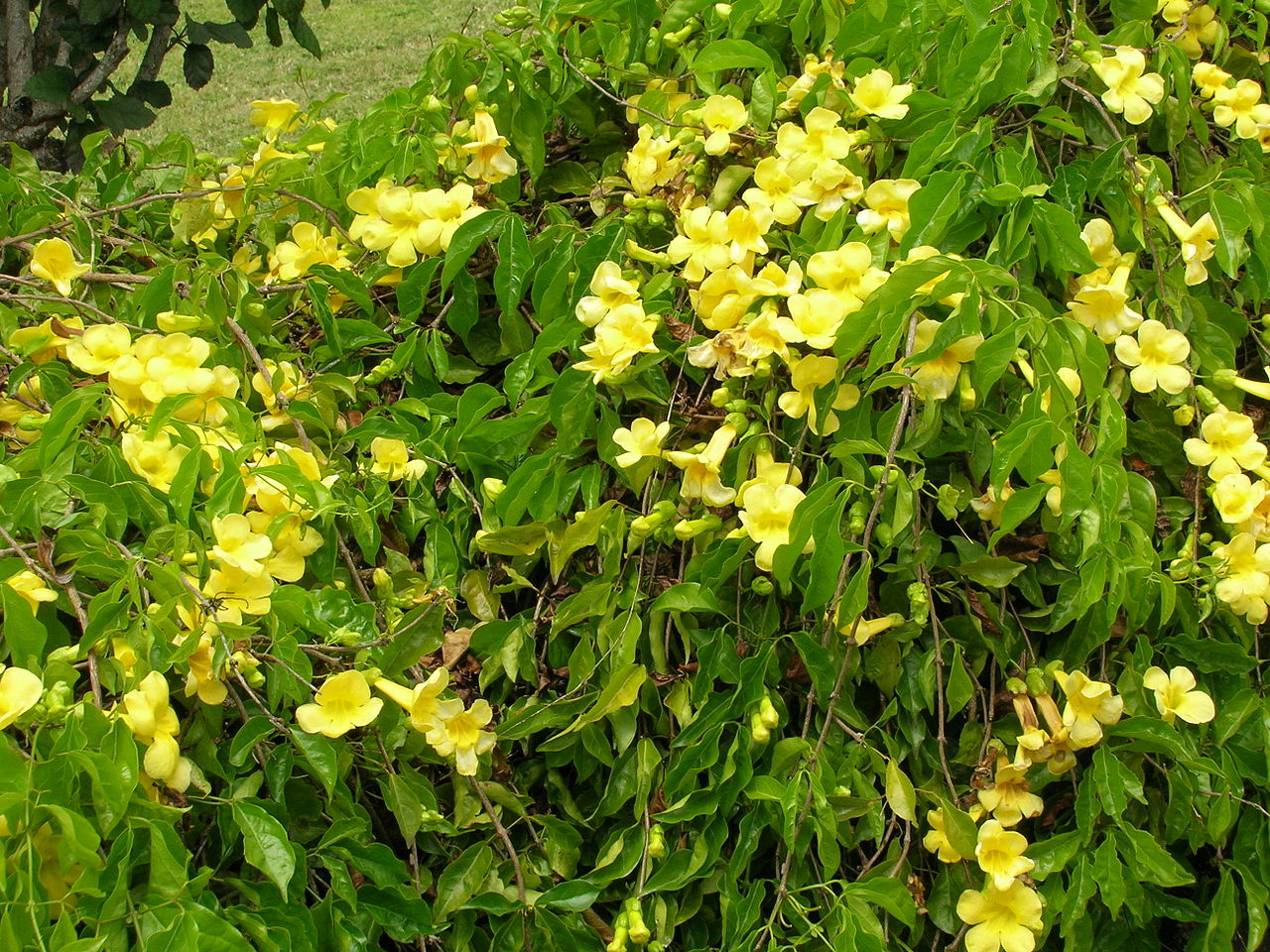
A perennial climbing liana native to West Indies, Mexico and Argentina. Cats claw vine is a long lived plant that grows relatively slow. It can reach up to 75 feet in height. Cats claw vine gets its name from the 3-pronged claw-like climbing appendages that are used to grasp onto plants or surfaces. The plant has a semi-persistent foliage.
Has bright yellow trumpet shaped flowers. They bloom in early summer. Its leaves are glossy green with two leaflets per petiole.
The fruit is glossy green and turn dark-brown as they mature. Each fruit contains numerous papery seeds. Needs full sun to part shade. It is drought tolerant. With self-clinging suction cups that are gentle on masonry, this quick-spreading vine can easily dress up an unsightly wall or frame a doorway or window. Macfadyena unguis-cati is a low maintenance, heat loving plant making it a great choice for warm landscapes.
For zones 8-10.
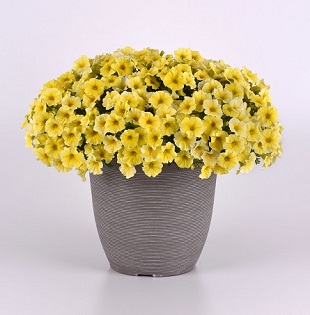
Caliburst Yellow Petchoa grows vigorously and has a mounded, spreading but controlled habit. It's perfect in containers, window boxes, and hanging baskets but makes great edging or ground cover in beds and borders. Pelleted seeds for easy handling.
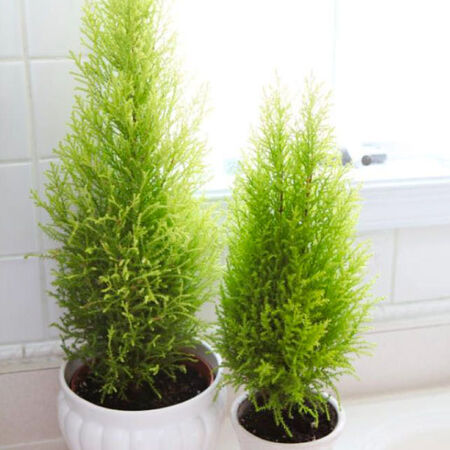
If after a few years, you decide to plant it outside, it matures into a beautiful, broad-crowned cypress to more than 75 feet tall. It is a popular ornamental in temperate climates around the world and does particularly well in coastal conditions, holding up remarkably well to wind and salt spray.
In cultivation, it is best suited to temperate climates in USDA hardiness zones 7 to 10.
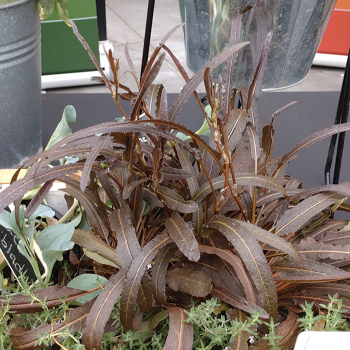
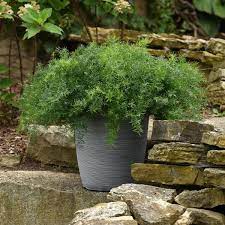
In zones 9 to 11 (very tropical areas) it can be used in the landscape year around. In zones 7 to 8, it may be root hardy and come back the following year. In all other zones, it will have to be used as a summer annual, similar to Petunias and Impatiens.
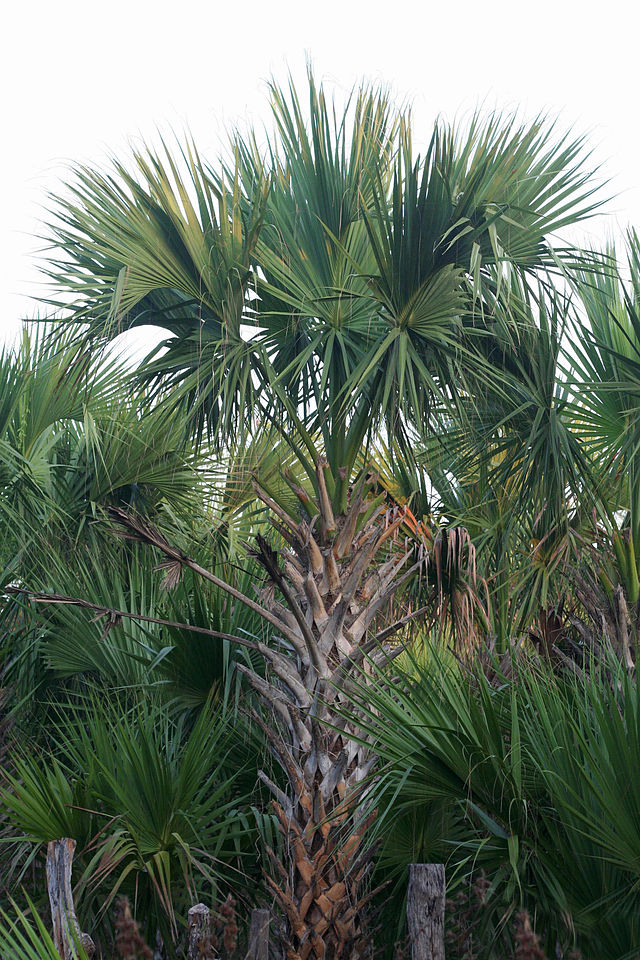
A mature palm can grow from 30 to 60 feet. It also makes a wonderful patio container plant for many years. This is usually a stout tree to 50 ft. tall, with a trunk to almost 3 ft. in diameter. Large, blue-green, fan-shaped leaves, up to 3 ft. wide, are divided into many palmate segments. The leaf stalk is stout, equally or exceeding the leaf in length. Dark purple fruits hang in showy clusters.
The wood is resistant to decomposition and shipworms, making it desirable for use in wharf pilings and fence posts. The leaves are used for thatching and making straw hats. The drupes and palm hearts are eaten. For zones 8-11
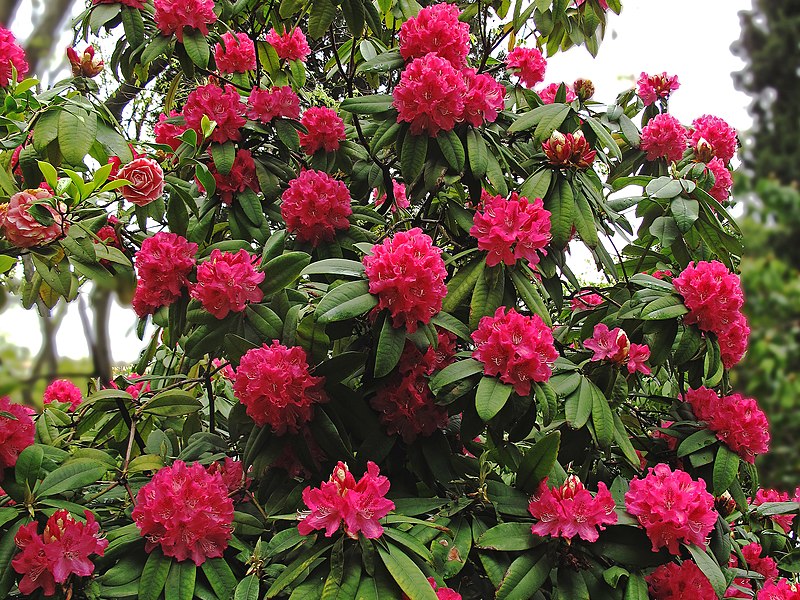
One of the most stately and impressive species rhododendrons, Tree Rhododendron is the state tree of Uttarakhand. It is extremely variable in stature, hardiness, flower color and leaf characteristics. Its species name arboreum means tree-like. It has broad, dark green leaves, 3-7 inches long, with a silvery, fawn or brown hairy coating beneath. In early and mid spring, trusses of 15-20 bell-shaped flowers, 2 inches wide and 1.25-2 inches long are produced in mostly scarlet color, but can be various shades. They have black nectar pouches and black spots inside. This plant holds the Guinness Record for World's Largest Rhododendron. In fact, a scarlet Rhododendron arboreum on Mt. Japfu, Nagaland reached a height of 60 feet. Rhododendron is native to Himalayas, from Kashmir eastwards to Nagaland.
Rhododendron arboreum prefers moist, humus rich, well-drained soils. It prefers an acidic pH of soil. Hardy for zones 6-9.
Plant these seeds on the surface of the soil (do not bury them), water and keep moist until germination. Place the pot in a clear plastic bag to help retain moisture/humidity on the seeds until they germinate, at which time the bag should be removed. Germination occurs in approximately 6 weeks.
Most yuccas have dry hard fruits, but the fruits of banana yucca are fleshy and succulent. They look roughly like short fat green bananas, thus the name. These fruits were a traditional food of the Apache and Navajo. They were prepared by roasting or baking, stripping out the seeds, pounding the remaining flesh into a pulp, forming the pulp into flat cakes, and sun-drying them for later use.
The resulting product is said to be nutritious, sweet, and delicious. The fruits were often picked before maturity and ripened off the plant to keep wildlife from eating them before they could be harvested Hardy for zones 6-11.
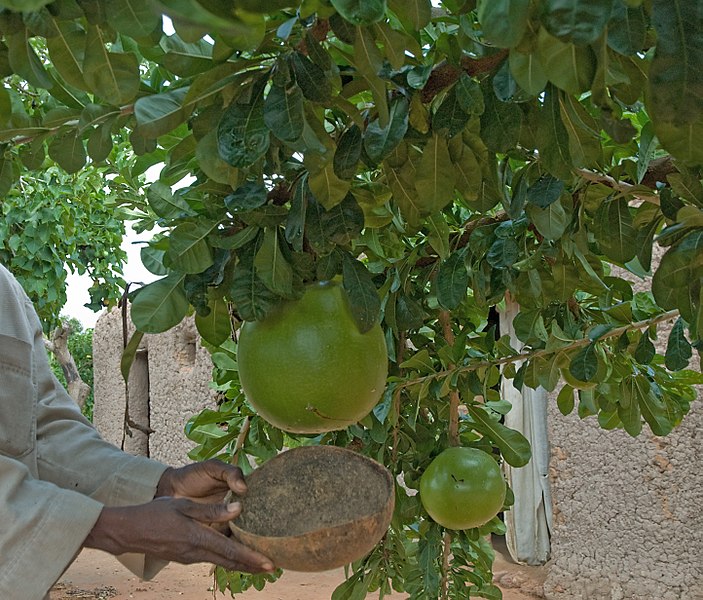
Flowers and fruits are both cauliflorus ( borne directly on the branches and trunk ). Trees typically bloom and fruit throughout the year. It takes about 6 months for a fruit to grow and ripen. Flowers appear singly or in small clusters, have a strong somewhat unpleasant aroma, and are pollinated by bats. Fruits mature to the size of a soccer ball, have a tough woody shell containing a pulpy flesh, and are often hollowed out and used as containers. Fruits are also used to make maracas. Long history of herbal medicinal uses.
A calabash is primarily used to make utensils such as cups, bowls, and basins in rural areas. It can be used for carrying water, or for transporting fish, when fishing. In some Caribbean countries, it is worked, painted, and decorated and turned into items by artisans, and sold to tourists.
As a cup, bowl, or even a water-pipe or "bong", the calabash is considered consistent with the "Ital" or vital lifestyle of not using refined products such as table salt, or modern cooking methods, such as microwave ovens. In Haiti, the plant is called kalbas kouran, literally, "running calabash", and is used to make the sacred rattle emblematic of the Vodou priesthood, called an asson. As such, the plant is highly respected. It is the national tree of St. Lucia. In Cuba, the dried fruit is commonly used as a coffee cup by rural farmers.[5] In Dominican Republic, the plant is called the higüero tree and it is popularly used to make decorative objects and ornaments, though historically it has been used in all sorts of ways. Best grown in zones 11-12.
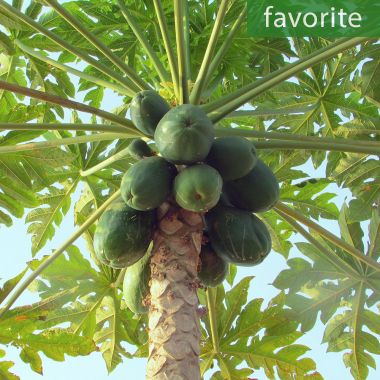
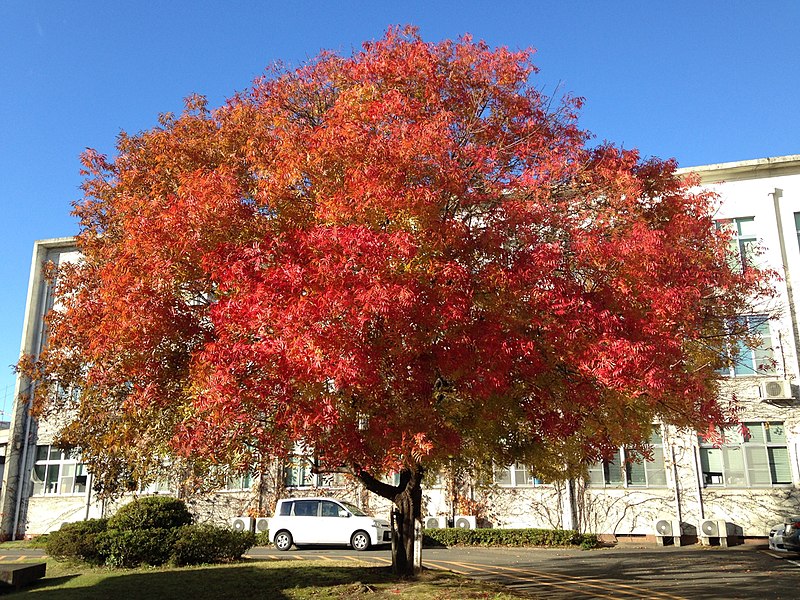
In the low-elevation deserts of Arizona, the Chinese Pistach is the only tree whose leaves turn a vibrant scarlet in the fall, making it a stunning addition to any landscape. Its foliage is dark green in the summer and turns orange or orange-red in the fall, creating a beautiful display of autumn colors.
The Chinese Pistach is native to central and western China, Taiwan, and the Philippines. It is a small to medium-sized tree, growing from 9-15 meters tall, and exceptionally up to 25 meters. The leaves are deciduous and pinnate, with 10 or 12 leaflets, and the terminal leaflet usually absent. The tree produces small red drupes containing a single seed.
This tree is most highly regarded in warm climates and grows best in full sun. It is also the most frost-tolerant species of Pistacia, withstanding temperatures down to about -25°C. Chinese Pistach is also disease-free, making it a low-maintenance choice for street trees or shade trees.
Not only is the Chinese Pistach a visually appealing tree, but it also has practical uses. In China, the oil from the seeds is used for biodiesel production. In Florida, it is used as a shade tree and as understock for the edible pistachio nut tree, P. vera.
If you're looking for a tree that can thrive in urban environments and provide beautiful fall colors, the Chinese Pistach is an excellent choice. Visit our website for more information on this impressive and versatile tree.
Best grown in zones 6-9.
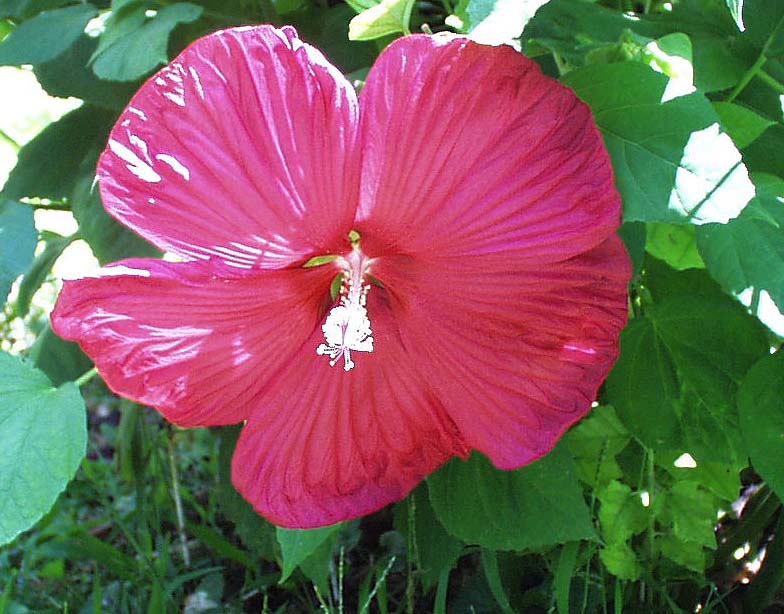
Like tropical hibiscus, rose mallow boasts huge, vibrantly colored flowers, some growing to the size of dinner plates. But once your hardy hibiscus bursts into bloom, it will continue flowering until the first frost and then return again in spring for a repeat performance. Despite its tolerance for cold weather, rose mallow also loves the heat and grows equally well in balmy southern climates.
For zones 5-9.
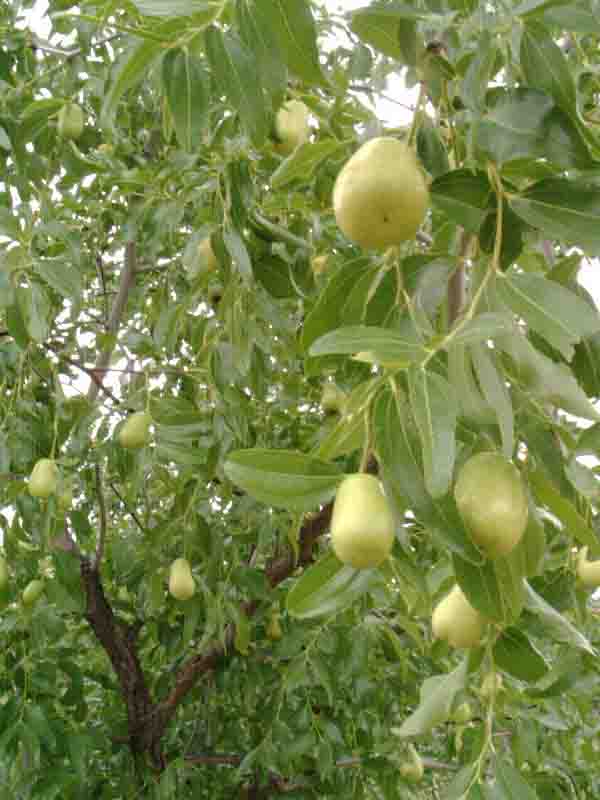
Deciduous shrub growing up to 5m with green oval leaves. The basis of their stalks is thorny. Yellow-greenish flowers in spring and summer. Typical yellow edible fruit. It adapts to any types of soils. Can be seen on the edge of Oak groves and Cork oak plantations shaping thorny hedges.
A medium sized African tree that is highly versatile and prized in its native range. The fruits are edible and have a sweetish flavor similar to the common Jujube. The tree is also a source of honey and a flavoring for alcoholic drinks. Some believe the tree to be the source of Christ's Crown of Thorns, hence its common name. For zones 6-10.
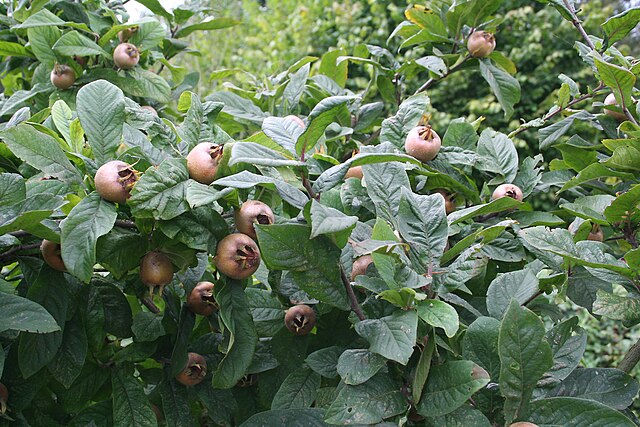
Mespilus germanica, commonly known as medlar, is a small, coarse, rounded tree or large shrub with spiny twisted branching that typically grows to 20 feet tall. It is native primarily to woodland and scrub areas from southeastern Europe to central Asia. Five-petaled, white to pink-tinged flowers (to 2" diameter) appear singly in June. Fruit is a brown pome (1" diameter) with an open end that is crowned by persistant calyces. Immature fruits are hard and inedible.
For zones 5-8. Here is a YouTube video on Medlar Harvest and Bletting.

It is hardy to zone 6 and is not frost tender. It is in flower in April, and the fruit ripens in September. The flowers are hermaphrodite (have both male and female organs) and are pollinated by Insects.
Suitable for: light (sandy), medium (loamy) and heavy (clay) soils, prefers well-drained soil and can grow in heavy clay soil. Suitable pH: acid, neutral and basic (alkaline) soils. It can grow in semi-shade (light woodland) or no shade. It prefers moist soil and can tolerate drought. It can tolerate atmospheric pollution.
Asian pears are cousins to the pears that are typically seen in grocery stores, but this fruit is similar to an apple and its many names reflect that characteristic. Other names that this fruit goes by are: Chinese pear, Japanese pear, Sand, Nashi, and apple pear.
Asian pears differ from the traditional European ones. These pears are usually round, firm to touch when ripe, and are ready to eat after harvest. Asian pears reach prime quality when they ripen on the tree, like an apple and peach. These pears will be crisp, juicy, and slightly sweet with some tartness, especially near the core.
Note: These seeds will require cold stratification, you may need to purchase our Cold Stratification Kit
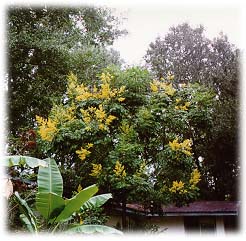
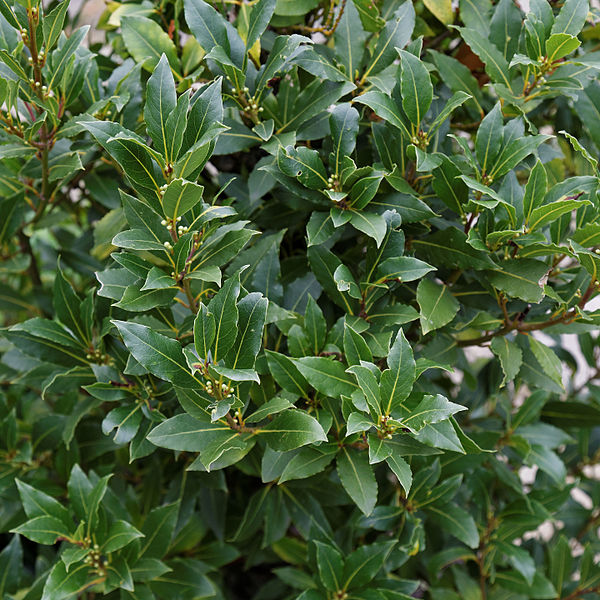
Location: Bay laurel is native to the southern Mediterranean
region. It is grown commercially for its aromatic leaves in
Turkey, Algeria, Morocco, Portugal, Spain, Italy, France, and
Mexico.
Culture: Light: Bay laurel grows best in partial shade.
Moisture: Water when dry. Bay laurel thrives with frequent
watering in rich, well-drained soil.
Hardiness: USDA Zones 8 - 10.
Usage: Where hardy, grow bay laurel in a woodland garden or as
a specimen. Protect from cold winter winds. Bay laurel is an
excellent shrub for hedges and a favorite for topiary sculpture
because it responds very well to pruning. It can be trained as
a standard or allowed to grow as a spreading shrub. In cooler
regions, grow in a container and bring indoors in winter.
The popular culinary seasoning, bay leaf, is used extensively in French, Italian, Spanish and Creole cooking. It flavors soups, stews, shellfish boils, pickling brines, sauces, marinades, and poultry and fish dishes. Always remove the bay leaves before serving, because they are sharp and can cut the mouth and throat. French chefs place bay leaves, parsley and thyme in a little bundle called a bouquet garni that is removed after cooking. Pick bay leaves early in the day and dry quickly under weight so they won't curl. Store in an air-tight jar.
Features: Bay laurel is the true laurel of Greek and Roman
mythology. A poet laureate is an accomplished poet, and the
Roman poet, Ovid, retold the story of the Greek nymph, Daphne,
who was transformed into a laurel tree by her father, Peneus,
so that she could avoid the amorous pursuit of the god, Apollo.
(Cupid had shot an arrow into the fair maiden's heart so that
she would not love Apollo.) Thereafter, Apollo wore a wreath of
laurel to show his love for Daphne. Laurel has always
symbolized victory and merit, and a baccalaureate (baca lauri,
Latin for "laurel berry") still is a symbol of accomplishment.
Bay laurel has been credited with magical properties, like
protecting from witches, the devil and lightning.
The leaves and berries of bay laurel contain the essential oils
eugenol, cineol and geraniol, which account for the distinctive
spicy aroma. Infusions are reputed to soothe the stomach and
relieve flatulence. An oil pressed from the berries was once a
popular liniment for arthritis and sore muscles, and still is
used in perfumes, candles and soaps.
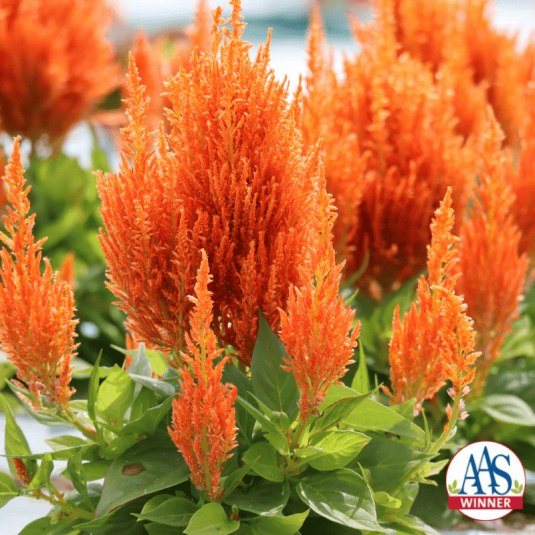
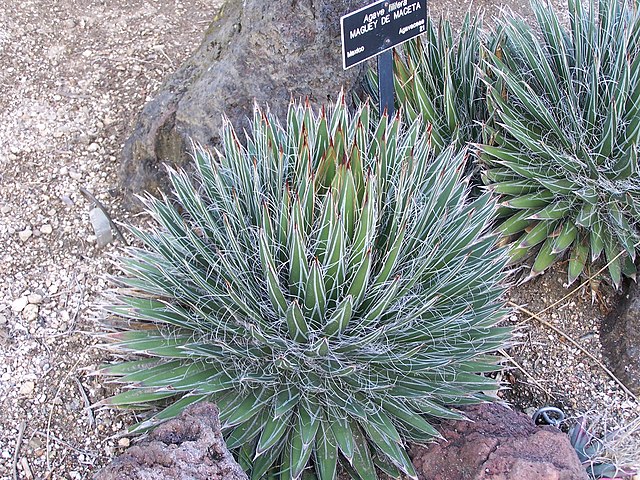
It is tolerant of most soil, but needs adequate drainage. This agave is hardy to fifteen degrees Fahrenheit and is very drought-resistant. It will respond to a fertilizer application during the monsoon season and likes supplemental irrigation during the hot, dry summer. Avoid watering it during the winter months.
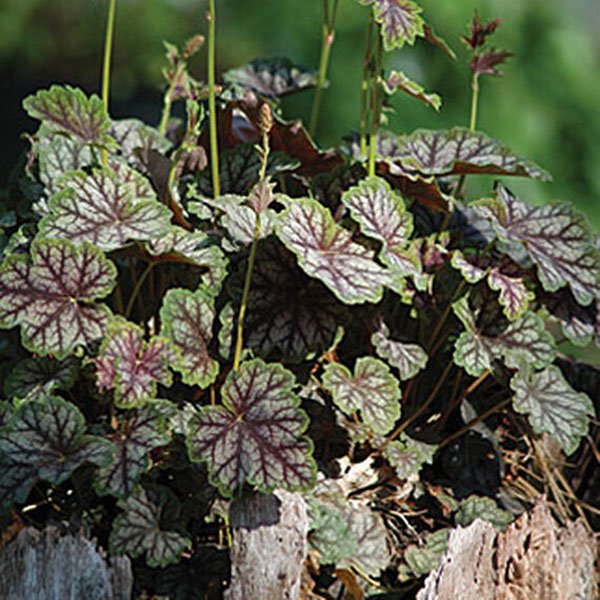
This Coral Bells plant has lustrous, large, evergreen leaves of coppery purple that hold their color through the growing season. Late summer brings 3-foot-tall wands of tiny, bell-shaped, pinkish white blooms. It makes a lovely addition to the flower garden! One reason for the growing popularity of heucheras is their stunning array of leaf colors, shapes, sizes and textures. Pelleted seeds for easy germination.
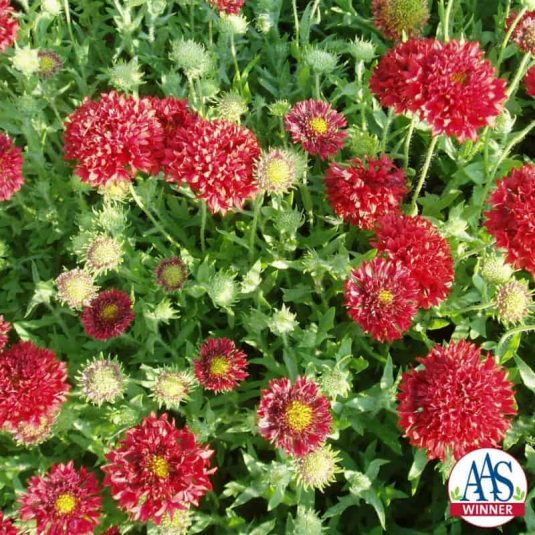
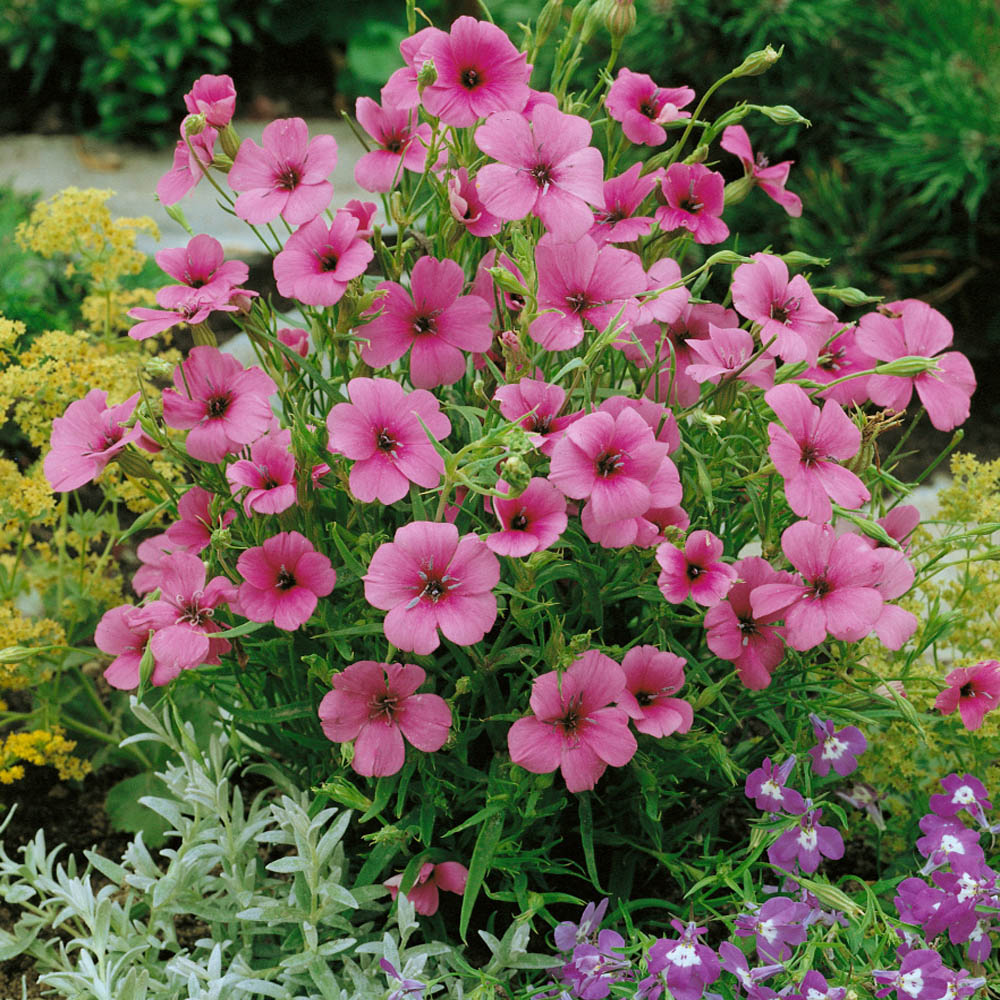
Catchfly Angel Rose has blooms that measure 2 inches across, with bright rose petals starred with an brilliant magenta eye. The Viscaria plants reach 10 inches in height and the same in width. They are not picky about soil, but it does need to be well-drained. They prefer a sunny location in the garden.
Directly sow Viscaria seeds outdoors in a prepared seedbed. Wait until last frost before planting the Viscaria Oculata seeds. Sow groups of 3-4 seeds and space them 10 inches apart. Thin to strongest plant. Rose Of Heaven Viscaria blooms in 6-8 weeks after sowing.
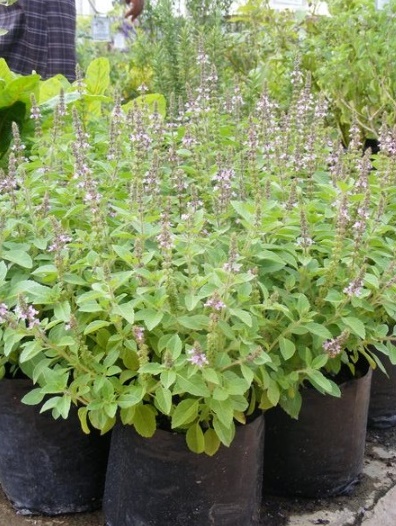
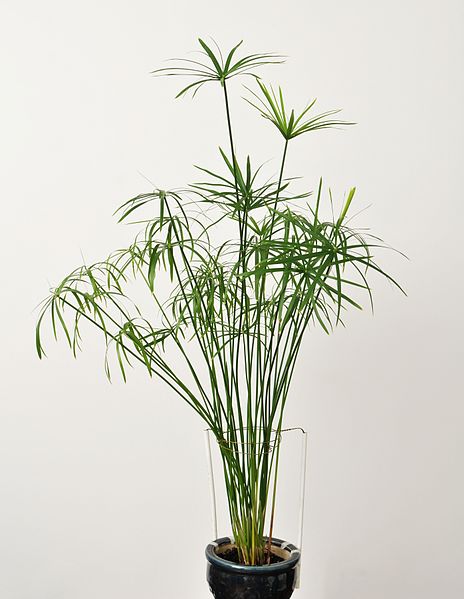
Cyperus Alternifolius Umrella Plant does best in a tropical environment, but it quickly adapts to the home. You cannot over water this plant! It will thrive when its roots are kept continuously wet. To ensure that the plant does not dry out, it is best to put the pot inside a second larger pot that has water in it, or grow Umbrella Plant in an aquarium or swamp type environment. Umbrella Grass Plant is well-suited as an ornamental water plant.
How To Grow Umbrella Plant: Sow Umbrella Plant seeds indoors. Pre-moisten peaty starter mix. Sow the Umbrella Palm seed on the surface, lightly cover. Keep the flower seeds continuously moist until germination. Keep the flower seed shielded from direct sunlight. Umbrella Plant will readily self-sow.
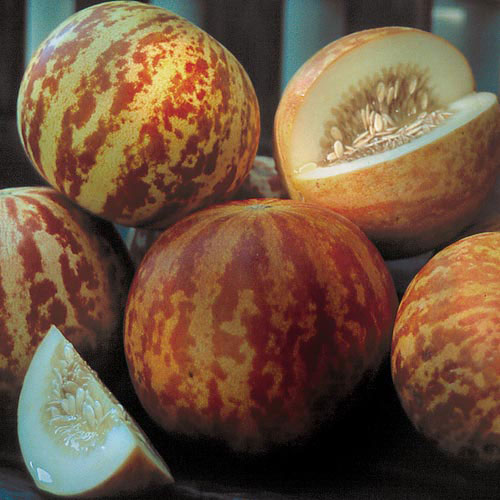
Tigger melons smooth rind has vertical variegations of rust orange and yellow. The melon's creamy, off-white flesh is juicy and sweet with a flavor that has been compared to that of Asian pear and cantaloupe.
Like most muskmelon types, it offers a highly aromatic scent and has been known to perfume the entire room they are in when at their peak of ripeness. Tigger melons will grow to be approximately the size of a softball and weigh a modest one pound when fully mature.

Enjoy in your garden as an ornamental, then break dry seed heads open for a high yield of blue-black seeds used for breads, cakes, muffins or to replant.
A unique addition to your kitchen garden!
Annual, zones 3-9.
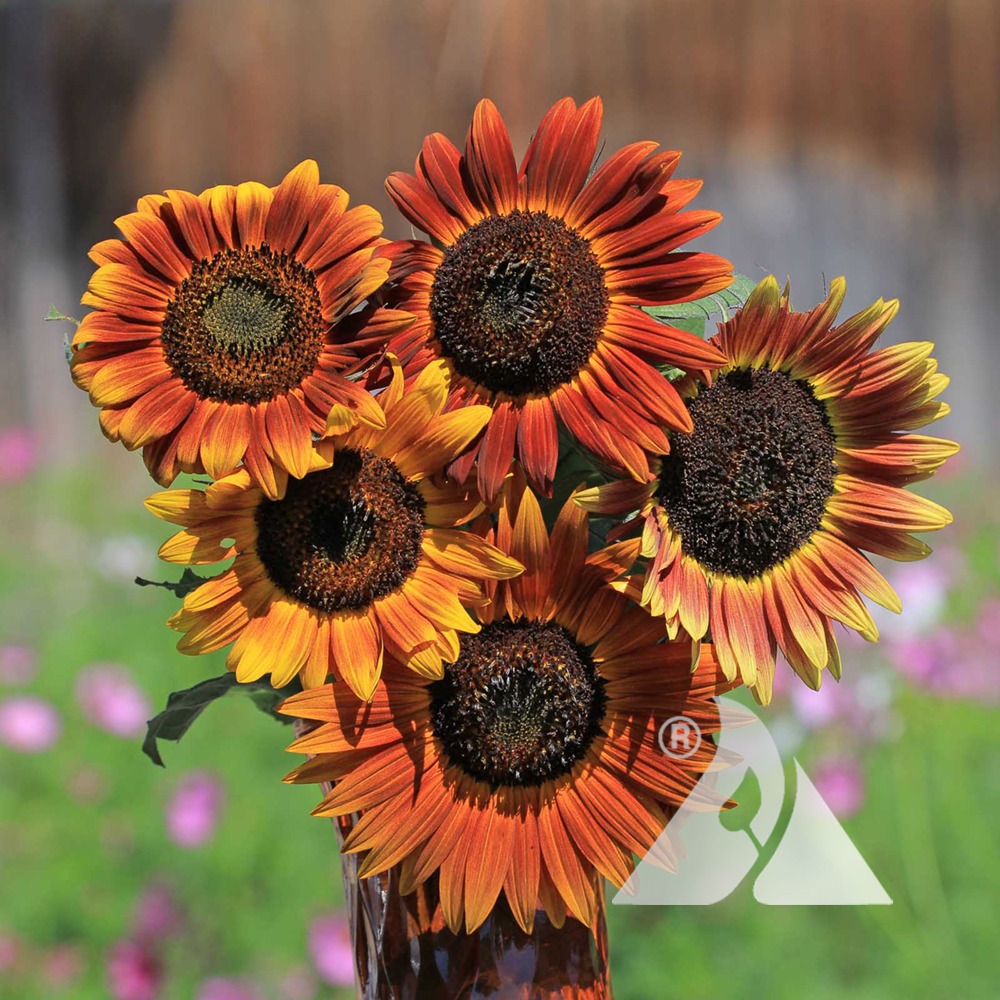
Each stem is branched and produces multiple blooms, making Evening Sun the perfect backdrop for your garden. And the flowers attract a mix of birds, butterflies, and loads of beneficial insects, so they're a great companion for vegetable gardens, too. 75 days.
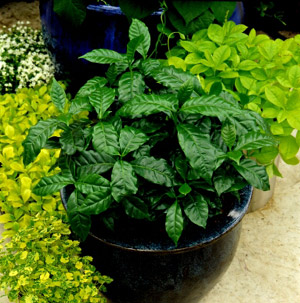
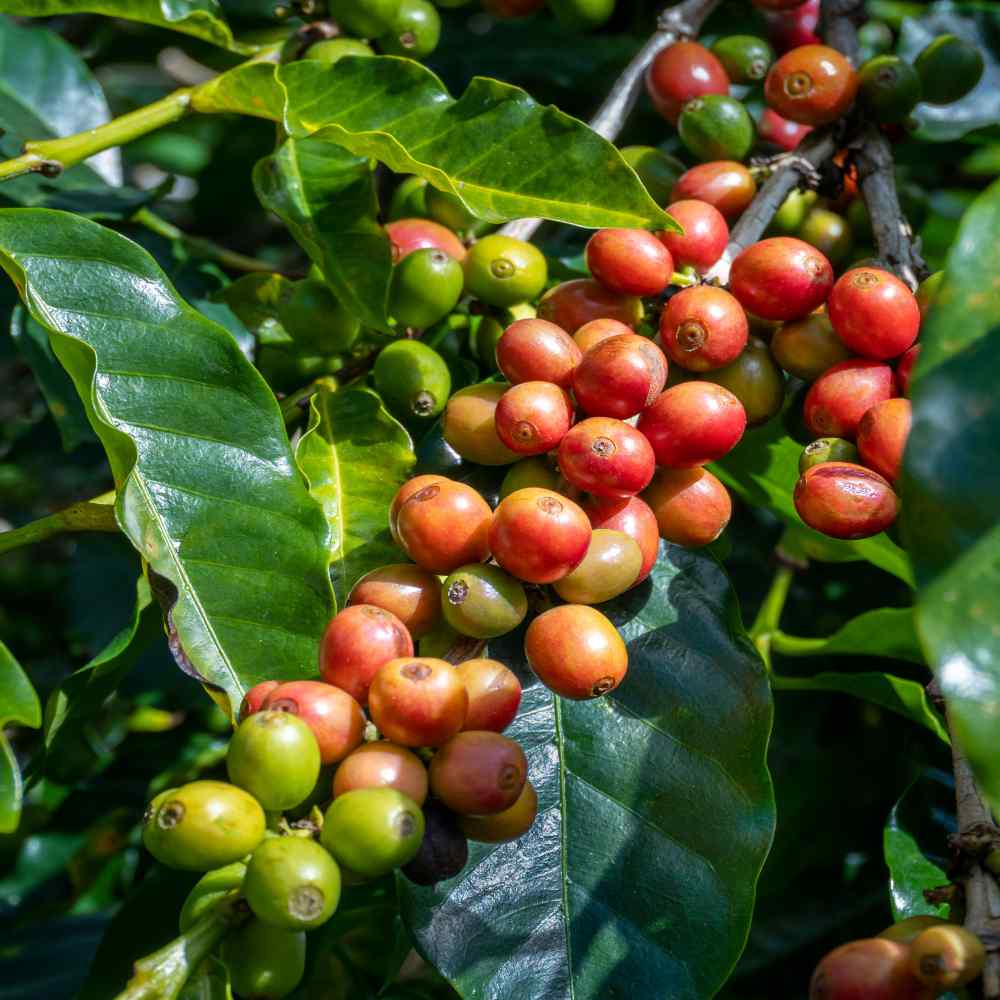
The Coffea Arabica plant produces star-shaped, sweetly scented white flowers. These flowers are followed by green fruits which change to red then to almost black as they ripen, a process that takes several months. Inside each ripened fruit are 2 seeds (or beans) that when properly roasted can be ground and made into coffee.
Growing coffee plants indoors from Coffea Arabica seeds is easy. They are vigorous growers and are long-lived. Coffea Arabica plants are very attractive. Just don't expect them to offer that morning cup of joe as the coffee plants as well as coffee seeds take some patience, and it could take a few years before you see many fruits on it.
The Coffee plant is usually about 1 foot in height at the time of purchase from a nursery, but can reach a height of about 5 feet, growing 12 inches per year. If a smaller plant is preferred, the dwarf version, Coffea arabica nana, which is what we offer, remains much smaller and grows at a slower rate normally only reaching about 18" tall. Can be grown in bright light indoors, outside in zone 10 and higher.
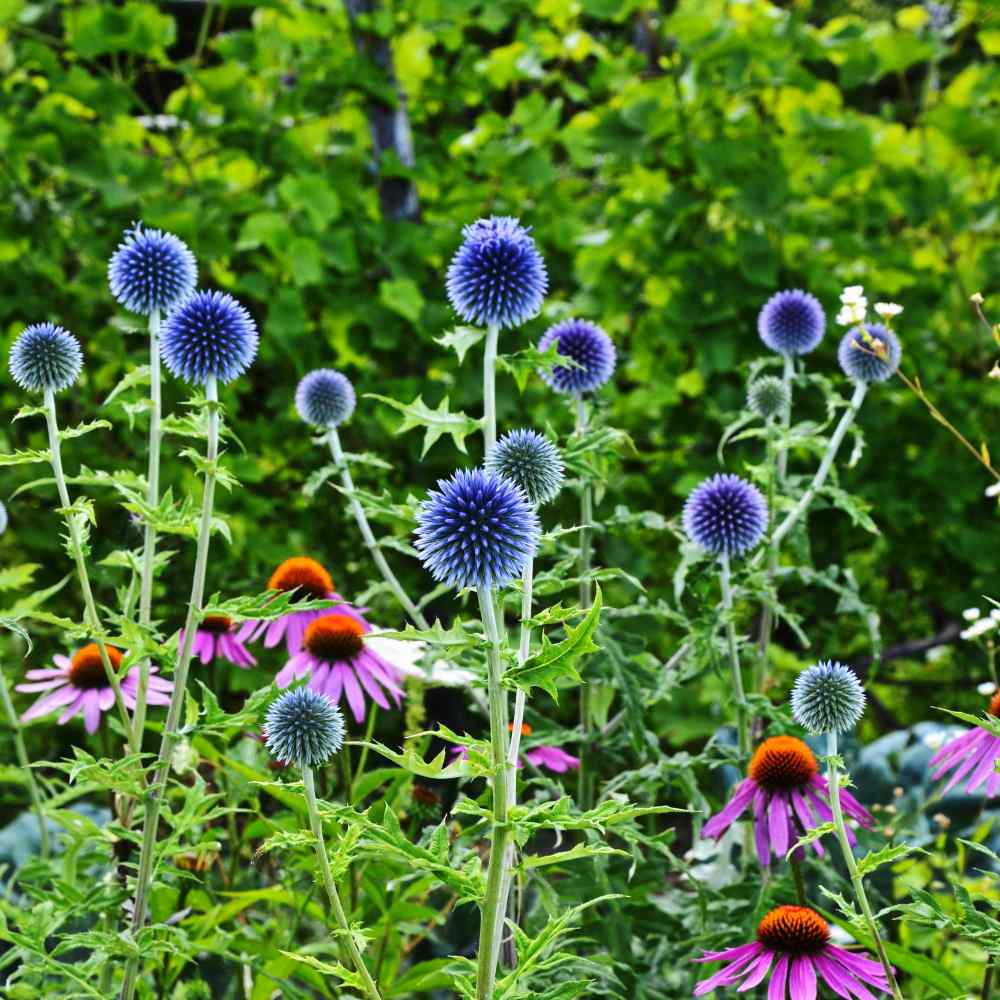
If the initial blooms on Globe Thistle are deadheaded, several smaller, shorter blooms will appear. Globe Thistle has plenty of flower seed, so it is a good self-seeder, and deadheading will help slow that process a bit. In richer soils, the plant might grow so much as to require staking. The basal leaves deteriorate quickly, so best to plant low-growing plants next to the Globe Thistle. Hands can be cut by foliage and flower, so best to wear gloves when handling.
Globe Thistle makes a nice cut flower. These fuzzy blossoms also dry well. Cut stems, hang upside down in a dry, ventilated place. Sow Globe Thistle seeds outdoors after temperatures have warmed. Prepare soil, sow the flower seeds on the surface and press them into the soil. Do not cover the flower seeds, keep them moist, and soon you will be enjoying a new addition to your xeriscape perennial garden.
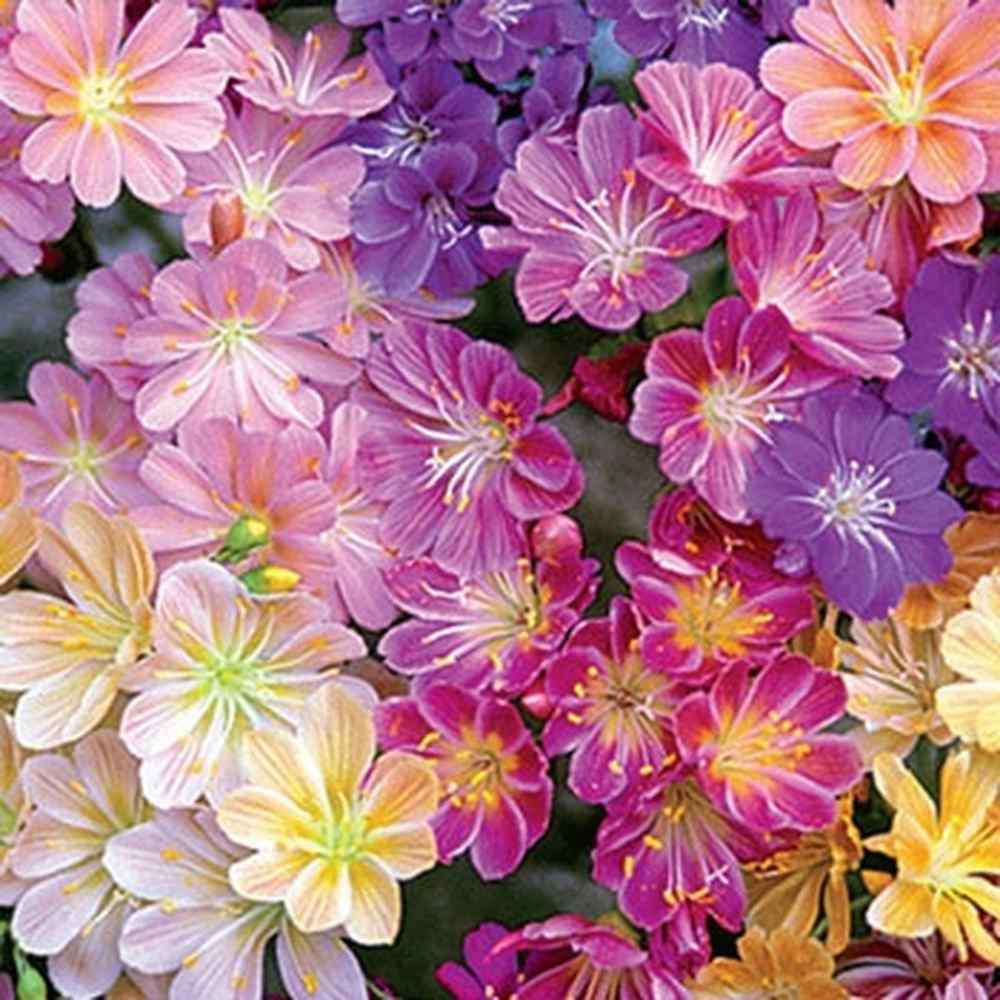
These blooming clusters grown from flower seeds are held atop sturdy 8 - 12 inch stems of the Lewisia plant. These larger flowers are held in radiating clusters above an attractive succulent five inch green rosette that develops into a considerable mound with time. Lewisia plants are deeply tap-rooted so they do not require a lot of water. Lewisia benefits from some dryness, so all you have to do is plant the flower seeds in a clay pot with some gravel added or stick them in the cracks of a rock wall or enjoy them in a well-drained rock garden. Perennial for zones 4-9.
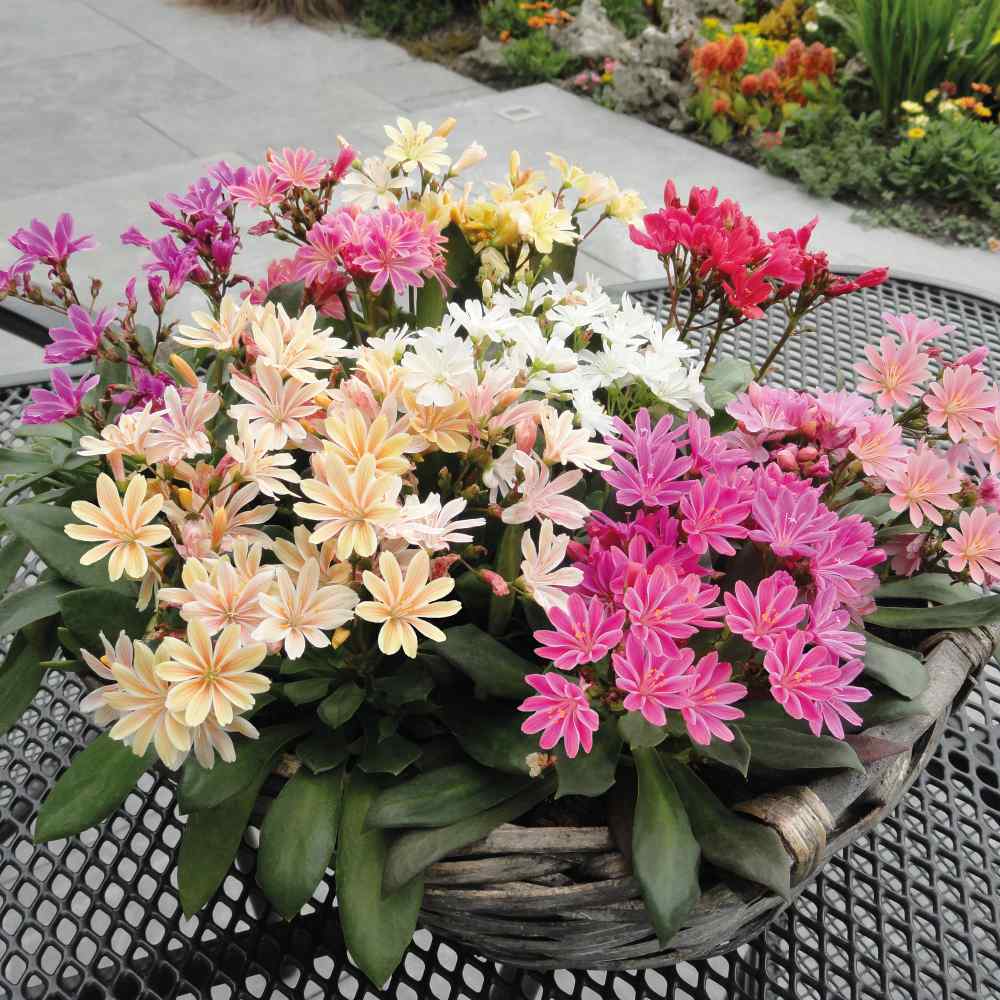
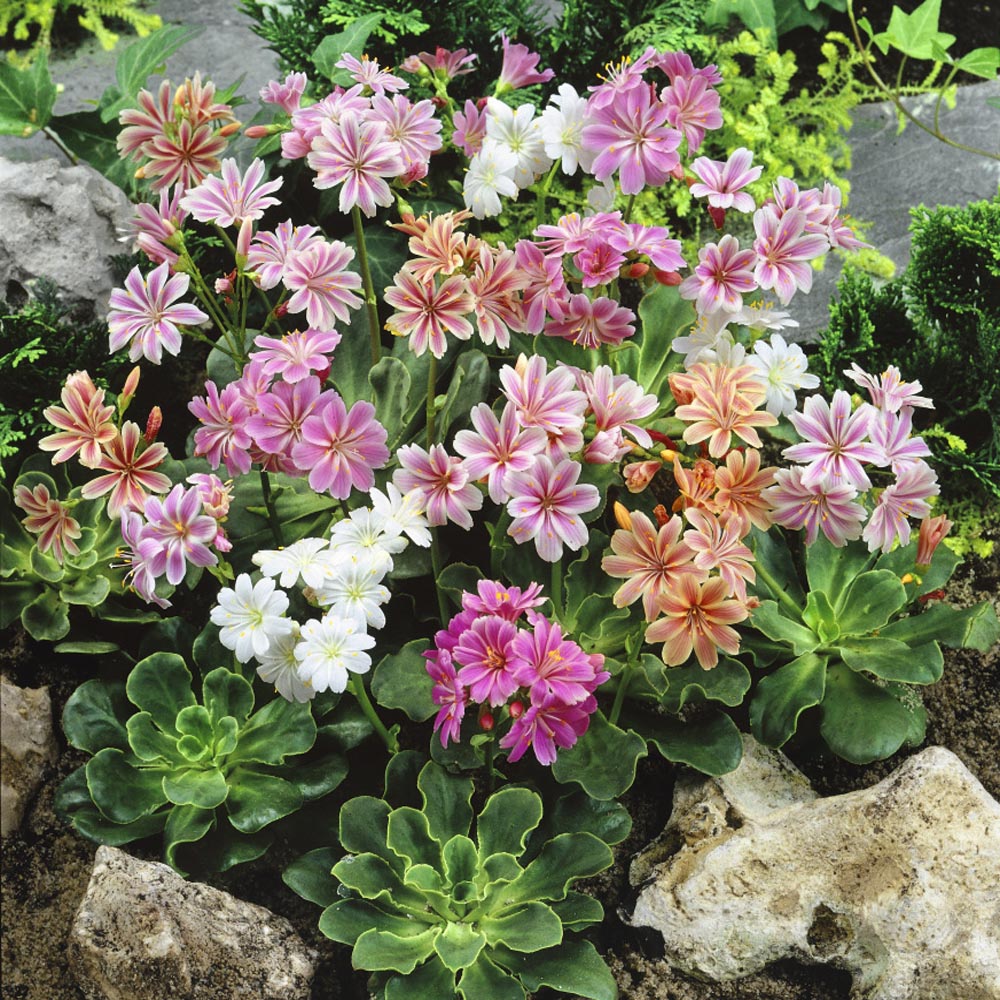
These blooming clusters are held atop sturdy six inch stems of the Lewisia plant. The one inch flowers are held in radiating clusters above an attractive succulent five inch green rosette that develops into a considerable mound with time. Lewisia plants are deeply tap-rooted so they do not require a lot of water. Lewisia benefits from some dryness, so all you have to do is plant them in a clay pot with some gravel added or stick them in the cracks of a rock wall or enjoy them in a well-drained rock garden. Perennial for zones 4-9.
